Car Of The Year - The Best Cars Of 2020
The Skoda Superb may have been the winner, out of 104 cars we have chosen to compete in 2020’s Car of the Year, and it was indeed a very tough decision to make. We bring you the cars that have won in their rightful categories… the best the industry has to offer! This is going to be a very long read, but it sure is worth it!


This is going to be a very long read, but it sure is worth it!
We crowned the Skoda Superb Laurin & Klement as Oneshift’s Car of the Year in 2020. We certainly were impressed with the Czech flagship sedan in what it delivered, in terms of comfort and practical features.
The Skoda Superb may have been the winner, out of 104 cars we have chosen to compete in 2020’s Car of the Year, and it was indeed a very tough decision to make.
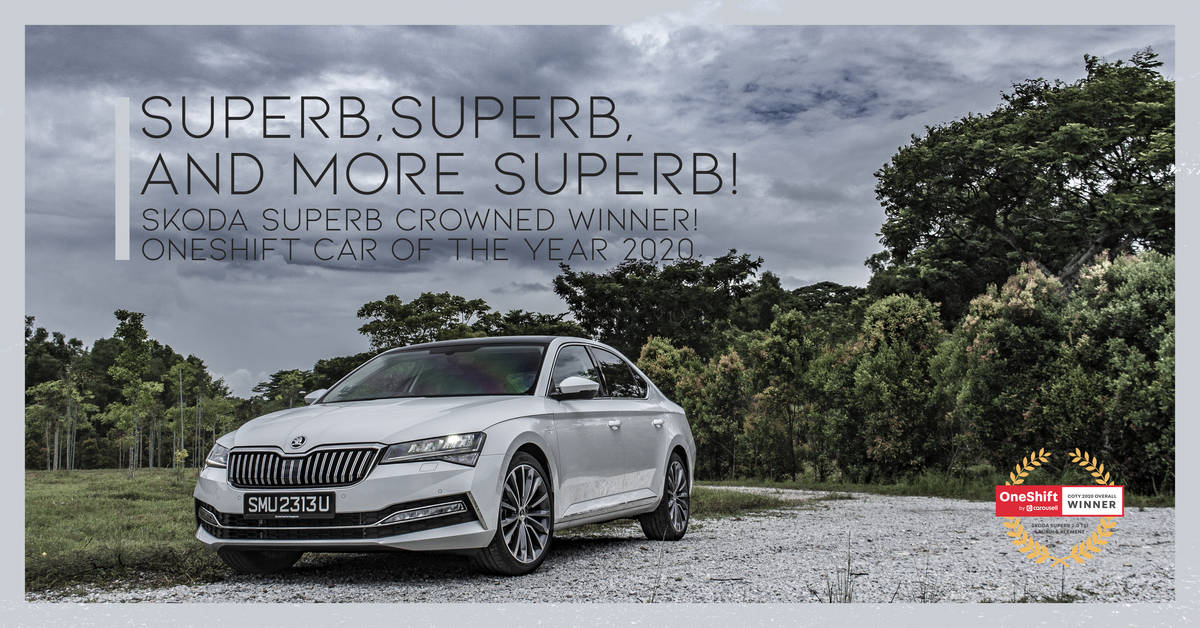
We bring you the cars that have won in their rightful categories… the best the industry has to offer!
This is going to be a very long read, but it sure is worth it!
While it had been a rather quiet year for Volkswagen, they sprung us with a rather pleasant surprise near the end of the year! Their smallest SUV is actually one that is big on space, all thanks to some very good packaging. In-fact the T-Cross is large for its class, nudging at SUV offerings one category higher.
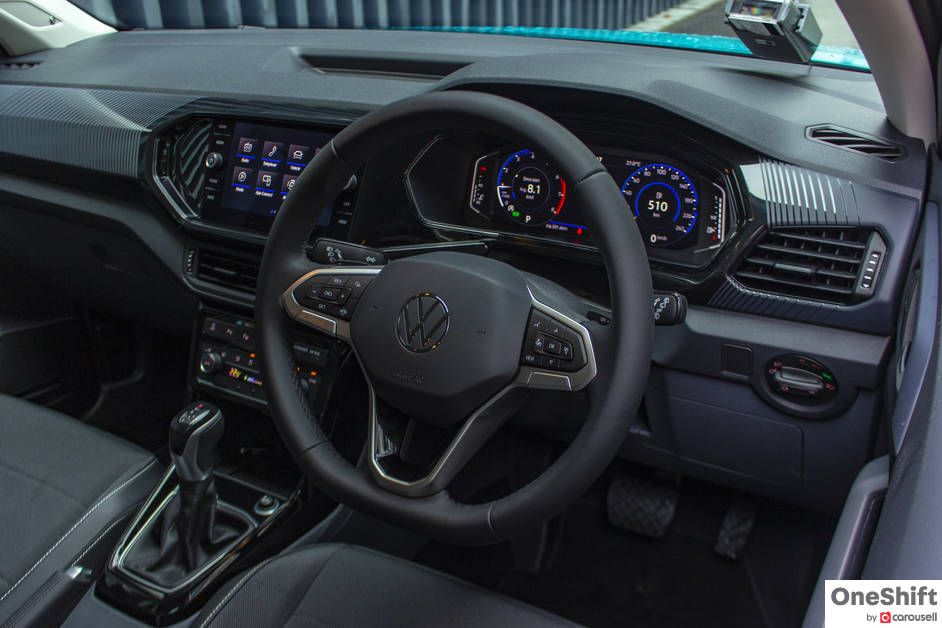
There is a hint of the brand’s flagship Touareg SUV in the design of its grille and even its side profile. On the inside, you can enjoy premium Volkswagen build quality, where fit and finish is really quite excellent.
The T-Cross is well equipped, featuring a 10.25” Active Info Display that has left-right gesture recognition. Mobile connectivity, via App-Connect ensures easy phone connection, while those who are often on the go, will appreciate the wireless charging pad included at the base of the centre console.
Premium sound is provided by Beats Audio, which features an 8-channel amplifier with 300 watts of output, and includes a subwoofer.
The T-Cross boasts an elevated seating position for a better view, with front passengers seated 597mm above the road, while those at the rear, at a slightly higher 652mm. Rear passengers benefit from legroom that is more common in SUVs a class higher. Making the most of the space available, the T-Cross boasts a 385 litre boot, that can be expanded to 455 litres, simply by sliding the rear seats forward by up to 14cm.
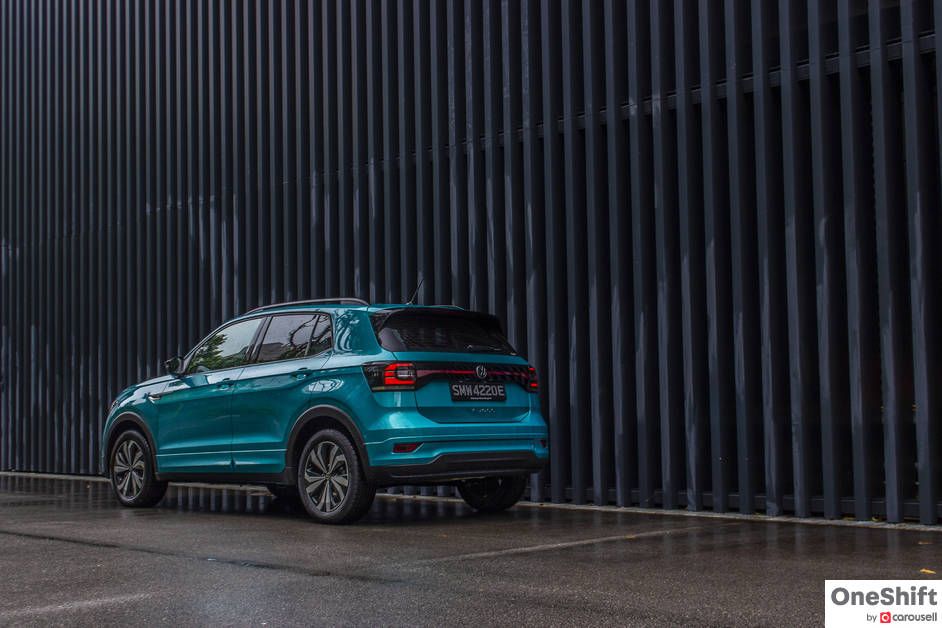
Power comes from a turbocharged 1.0 litre engine, coupled to a 7-speed quick-shifting DSG transmission. The T-Cross is capable of delivering an impressive combined 19.2km/l. With its suite of safety features, that includes an Automatic Post-Collision Braking System, which holds onto the brakes, designed to prevent the risk of secondary collisions; the Volkswagen T-Cross has been awarded a 5-star Euro NCAP rating.
The T-Cross is available in 8 exterior colours, and with three attractive design packages to choose from.
MG has been recently making inroads into our local market, with just two initial offerings. While the automotive brand mentioned that they would put more emphasis on EVs, thankfully they do have a range of ICE cars.
The MG HS is the brand’s compact-sized petrol-powered SUV. As one of two first MG offerings here in Singapore, the HS is surprisingly well-built, and priced to please. The HS combines confident muscular styling, with an impressive amount of creature spoils in its interior.

While it does seem to take inspiration from some of its competitors, MG seems to have included just the best bits. Features like its sports-inspired single-piece electrically-adjustable front seats, leather-stitched dashboard and its flat bottom steering wheel, all point to a sporty driving experience. The infotainment system, fronted by a 10.1” screen offers Apple CarPlay/Android Auto connectivity.
Those seated at the rear can also enjoy a good view, as the HS comes with a panoramic sunroof. Rear passengers benefit from a near-flat floor, while its boot, offering 463 liters is quite plenty for those who have a need to haul their gear.
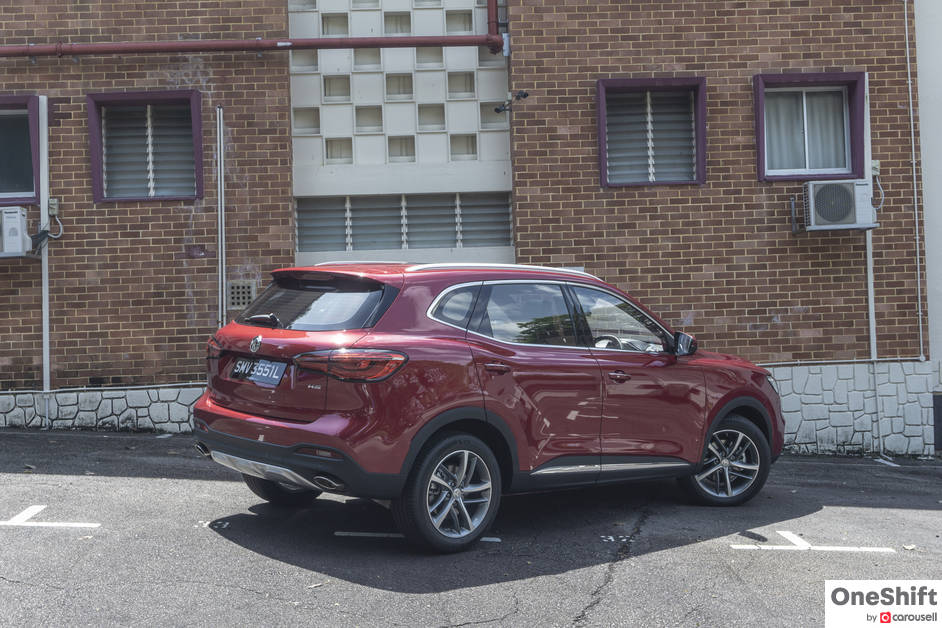
Power is from a 1.5 litre turbocharged engine that delivers a very healthy 159bhp and 250Nm, and puts its drive down to the road via a quick-shifting 7-speed dual-clutch transmission. The HS is a car where you can enjoy its performance, in a cabin that is well-insulated, and is rich in quality at its price point.
If you are someone looking for an SUV capable of carrying the extended family, and one that is filled with useful features, look no further. The KIA Sorento SX Tech Pack checks these boxes well.
The Sorento is KIA’s largest SUV offering here. The fourth generation Sorento’s exterior, is designed with road presence in-mind; and like its predecessors, is built to ferry up to seven.
The Tech Pack variant offers an impressive list of features, from useful ones to even some which are a little on the fancy side - like its touch-sensitive climate control toggles.
On the inside, you are greeted by a 10.25” infotainment touchscreen, which offers users both Apple and Android connectivity. Premium audio is from a BOSE 12-speaker sound system, which is ideal for milking the best out of your mobile phone’s playlist, as the latter recharges itself on the wireless charging pad.

With the Sorento’s size, designers have split the front air-conditioning vents into upper and lower sections for optimal cooling. The front seats are also ventilated, ensuring that you can easily clock your miles in comfort. Middle and rear rows are also air-conditioned, ensuring that occupants are kept happy.
A 2.2 litre Smartstream turbocharged diesel engine powers the Sorento, delivering 202ps and 440Nm. The high amount of torque, made available low down in the engine revs, ensures that hauling up to seven is an easy task, while its 17.5km/l combined fuel figures ensures that you can keep going with lesser stops for fuel in-between.
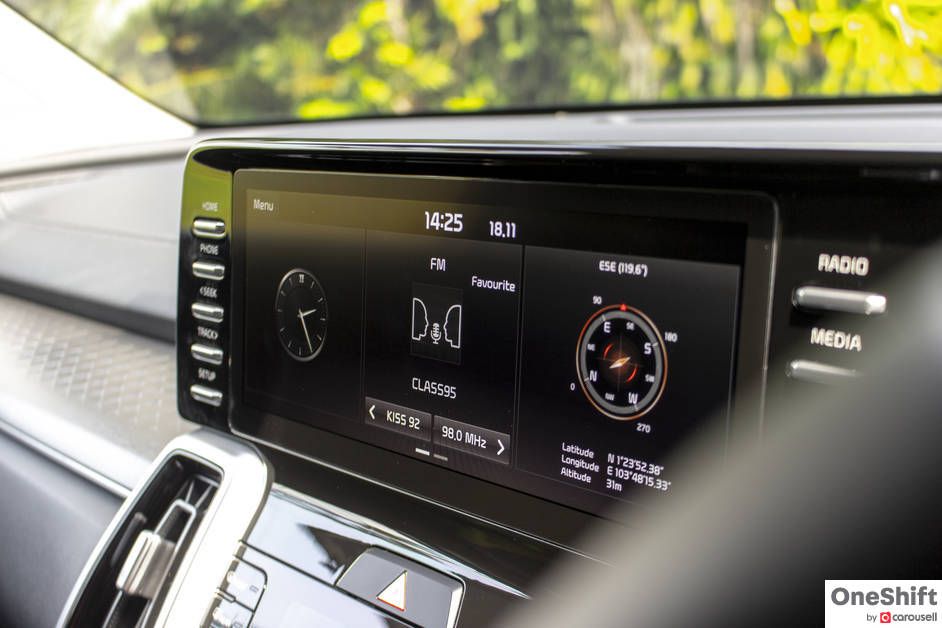
The innovative Blind-Spot View Monitor (BVM), that displays the blind area of the direction you are signalling on the digital instrument cluster. This ensures that smaller objects or vehicles beside you are not missed. If you are one who might often travel across the island, the Smart Cruise Control (SSC), which relies on a front-view camera and radar to adapt to traffic conditions, takes some of the stress derived from driving away, while you enjoy the comfort of the Sorento’s well-insulated cabin.
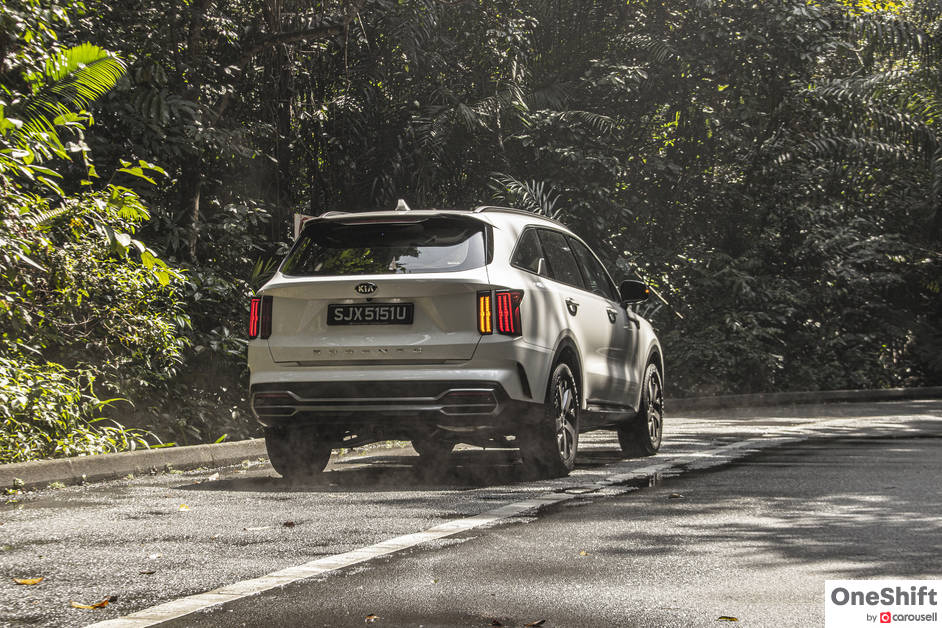
The sum of its features, and how well the Sorento delivers its drive, makes this our favourite family SUV for 2020.
Mazda is known for going the extra mile in ensuring that their cars are among the best built; and the Mazda 3 is no exception.
The current generation Mazda 3 M-Hybrid 1.5 Hatchback Astina sports minimal creases in its sheet metal, for a cleaner look. The Mazda 3 is built with quality that easily rivals some premium European brands. The interior is without a doubt, among the best-in-class, with tastefully selected materials, plenty of soft-touch surfaces, and a small scattering of classy chromed trim.
The interior features a 7” LED central display, and even comes with a CD player - a feature that is getting rarer these days. The Astina variant is equipped with a premium BOSE 12-speaker sound system, which sits well with the 3; since engineers have fussed over the materials they should use for their roof lining, and also developed an innovative “two-wall” structure creating space between the body and the carpeting, for improved sound insulation.

The Mazda 3 is their very first vehicle here to feature mild-hybrid technology here. The 1.5 litre SkyActiv-G engine which dishes out 120hp and 153Nm, features a high compression ratio of 14.0:1. A 24V M-Hybrid drive system, which adds another 6.8 hp, and more importantly 48.5Nm helps with efficiency and the crucial first few meters from a standstill. The new drivetrain allows drivers to attain a combined 18.2km/l, which is very impressive.
Ride refinement is further enhanced with G-Vectoring Control Plus (GVC Plus), which does clever tweaks to the engine torque and to the brakes, improving grip and stability as you put the car into corners. This is done by subtly transferring added weight of the car to the wheels that need it the most.
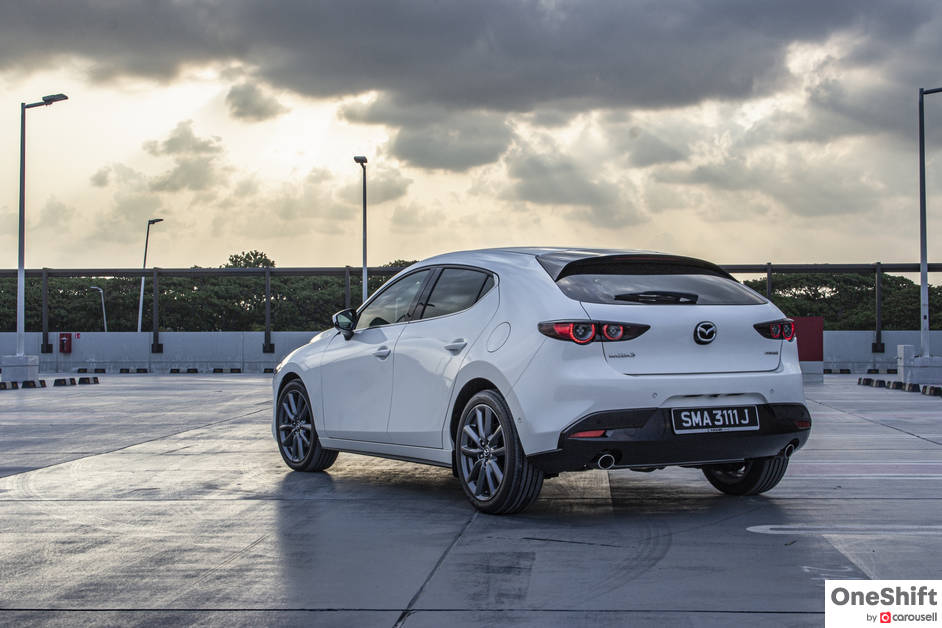
The Mazda 3 feels more luxurious than it is priced, and is surely built to please.
The B Segment might be a small one… with its cars equally tiny. But among the various offerings. The SEAT Ibiza does stand out, with its build quality, paired with competitive pricing.
While most would think that B Segment cars are meant to be cheaply-built, the Ibiza is one of the few to buck that trend. SEAT’s supermini features sharp styling, coupled with excellent build quality, which is right up there with some premium brand cars.
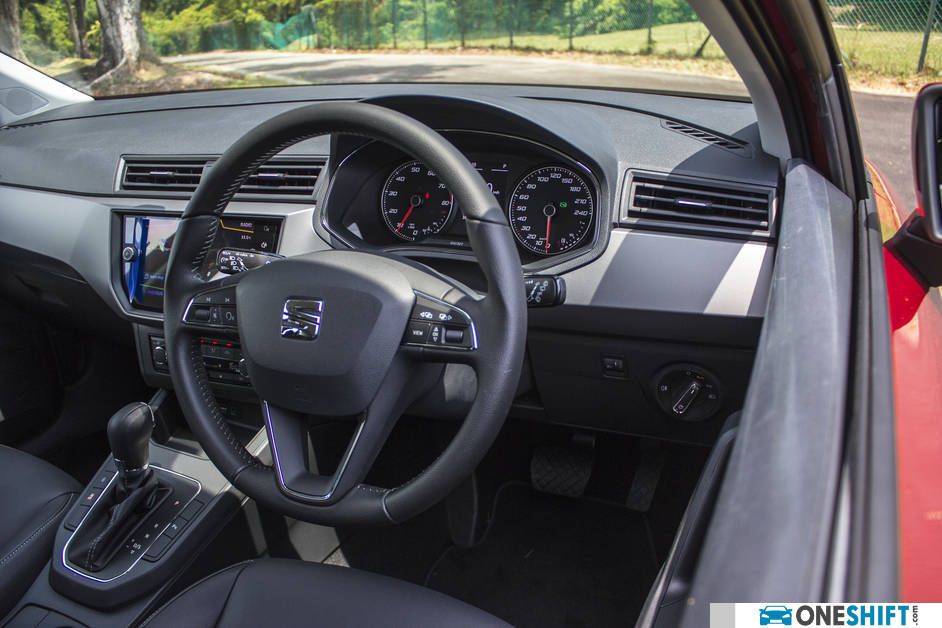
Even with its small footprint, the small hatchback boasts dual-zone air-conditioning, while its 8” infotainment screen is easy to navigate, offering inputs via MP3, WMA, SD Card, Bluetooth, Aux-in. Both Apple and Android products are also supported. The Ibiza’s 355 litre boot is also large for its class.
The 1.0 turbocharged engine delivers 115ps and 200Nm, and is mated to a quick-shifting 7-speed DSG transmission.
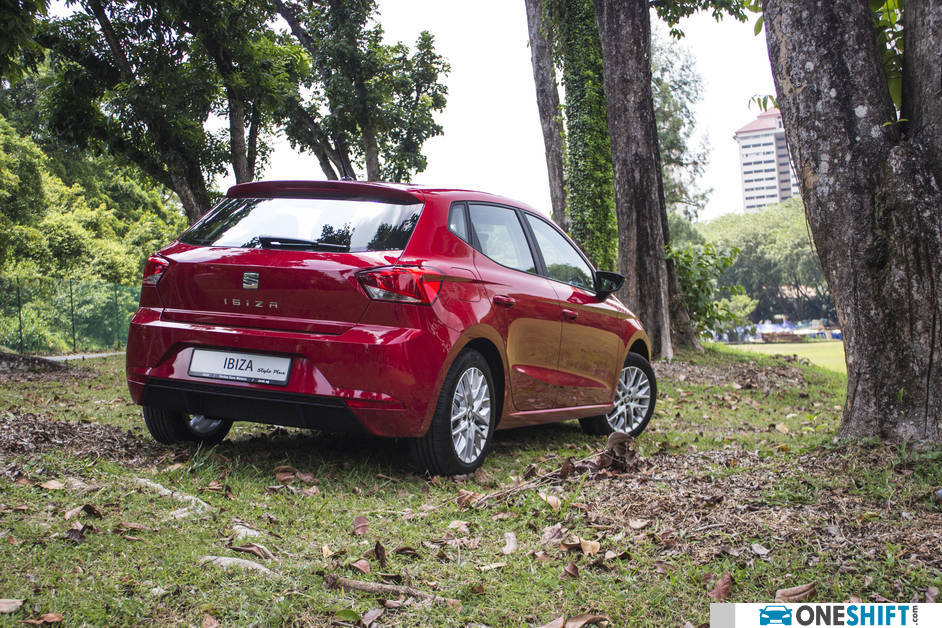
We love how the tiny SEAT instills turn-by-turn confidence.
You could be forgiven for believing that the new Mercedes-Benz CLA is its larger CLS sibling that just needs a little watering. The second generation CLA we feel, had gotten a little more freedom in its design, since Mercedes-Benz had decided to also build a sedan variant of the A-Class.
The result is an attractive-sleek body shell, built on the very same A-Class architecture. The CLA also departs from being the cheaper alternative to the C-Class sedan that you cannot buy. What we have here is we’d dare say a “proper compact 4-door coupe”.
The CLA features improved build quality over the car it replaces, and also sports an interior that has very good fit and finish. The new MBUX-equipped voice-capable infotainment system is fronted by a 10.25” screen, while another screen of the same-size functions as the instrument cluster; both of which are housed on a neat singular panel.
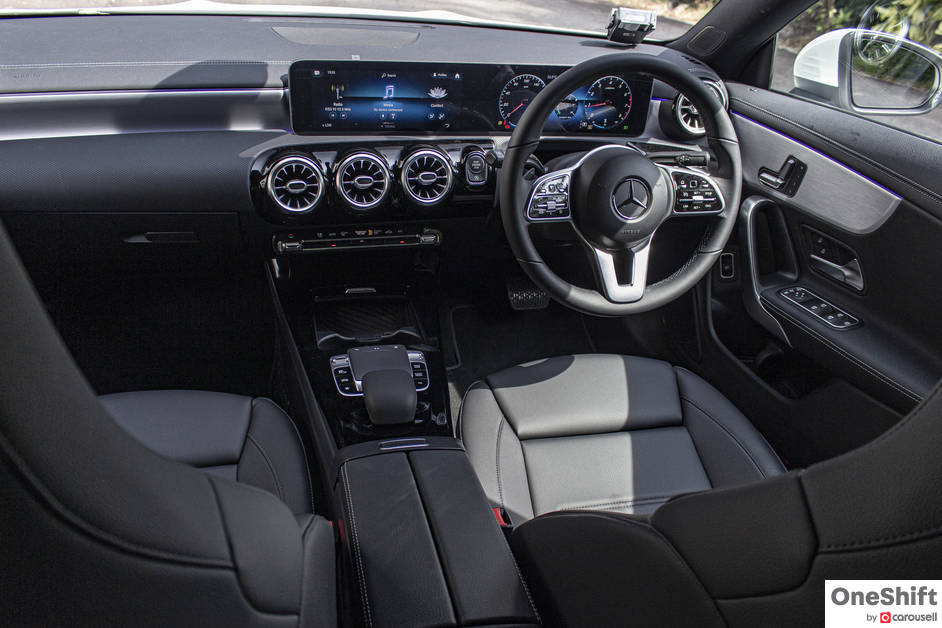
Nifty features, like the logic built into the MBUX, means that the corresponding lamp activates when reaching over to the vacant front passenger seat in the dark, allowing you to easily find items; great especially when you are alone.
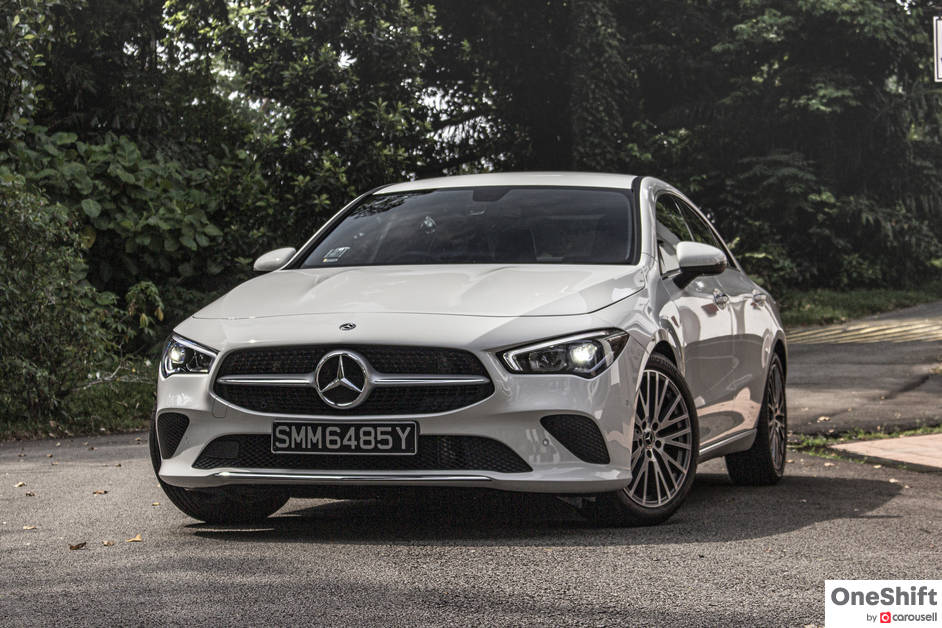
The CLA is powered by an all-new M 282 series 1,332cc engine, developing 163hp and 250Nm, while drive to the front wheels is via a fast-shifting 7G-DCT. Handling is very good, and fitting of its sport-inspired intent. Fuel efficiency is quite impressive, with a claimed 17.5km/l, thanks to some new technologies like a 0.2mm thick inner bore mirror coat which helps in the reduction of piston drag.

The CLA is also quite the practical car too, with a 460 litre boot, that boasts a flat floor and rear 40:20:40 folding seats.
One of the cars that has courted controversy in 2020 is the new 1 Series BMW. BMW purists would be quick to point out to you that the new car is a front-drive affair, unlike the car that it replaces, which is RWD.
Overall, the new 1 Series delivers in places that were lacking in the previous car. From improved legroom at the rear, and in its interior quality, where the latter has received many design and quality carry-overs from its larger stablemates.

The new BMW Operating System 7.0 also makes its way into the entry-level BMW, which adds voice-activated control, and a suite of technologically advanced features; like its Reversing Assistant, that allows you to back the car to distances of up to 50m, while tracing the route previously taken, meaning that you can reverse safely out of dead ends.
The 1 Series is also practical, with 380 litres of cargo space, and has rear seats that fold in 40:20:40 fashion, for added flexibility.
The new 118i takes its power from a 1.5 litre turbocharged engine, delivering 140bhp and 220Nm, and is coupled with a quick-shifting 7-speed Steptronic dual-clutch transmission. Handling, which is a BMW hallmark is very good, especially with the performance-leaning M Sport suspension.
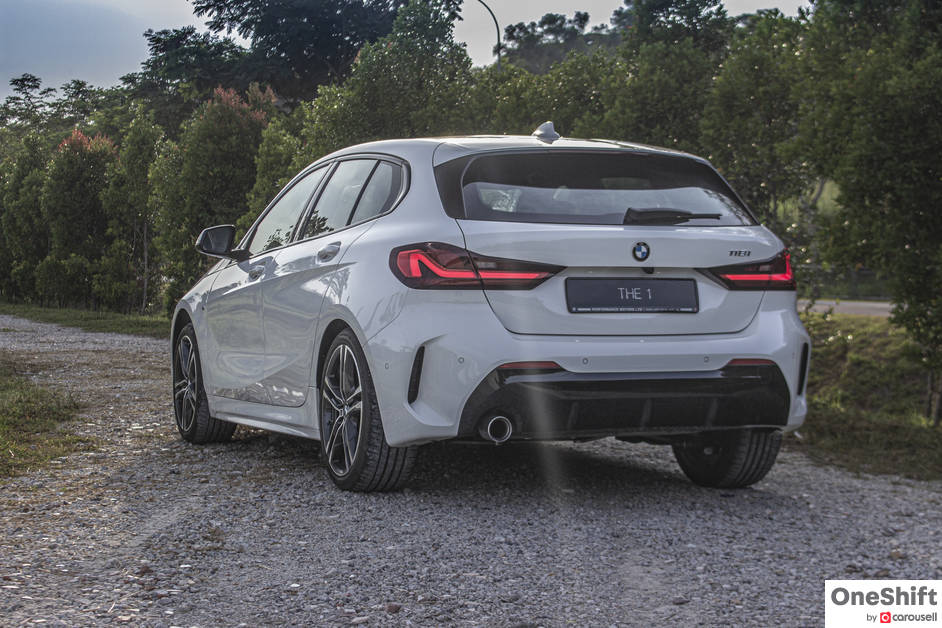
While the new 1 Series may be a front-wheel drive car, it does deliver well on passenger accommodation, especially at the rear.
Building an economy car these days is no easy task, with consumers wanting more, and with profit margins getting thin. With manufacturers meeting their needs, the humble economy sedan now rivals many sedans a class above with their list of features.
The new Honda City is one of three offered here, and it is surprisingly well built. While in the past, manufacturers will find ways to reduce manufacturing costs with a simpler build, the City on the other hand closes that gap a little more that we initially thought.
The Honda City is well equipped, and with the RS body kit, it is also quite a looker. We like how Honda has put some attention into its head and tail lamp sculpting, and even with its simple underpinnings, they have done a fairly good job in sculpting the City’s bodywork.

The interior’s touchpoints are built with quality in-mind, air-conditioning toggles have especially been given some attention, and turn with a reassuring click. Little things that you will not notice, like optimum airflow within the cabin, translates to better passenger comfort. Design touches like a red-glowing ‘Start’ button, are features you would not expect from a sedan in this segment.
Thanks to some ingenious redesigning of the front seats, adult-sized passengers in both the front and the rear can enjoy a good amount of legroom.
The Honda City is powered by a 1.5 litre DOHC i-VTEC engine, delivering 118bhp and 145Nm, which gets you around without issue. A CVT puts the drive through the front wheels, with characteristic smoothness, while delivering 17.9km/l. The City feels refined, thanks to a well-insulated interior, and a suspension designed for comfort.
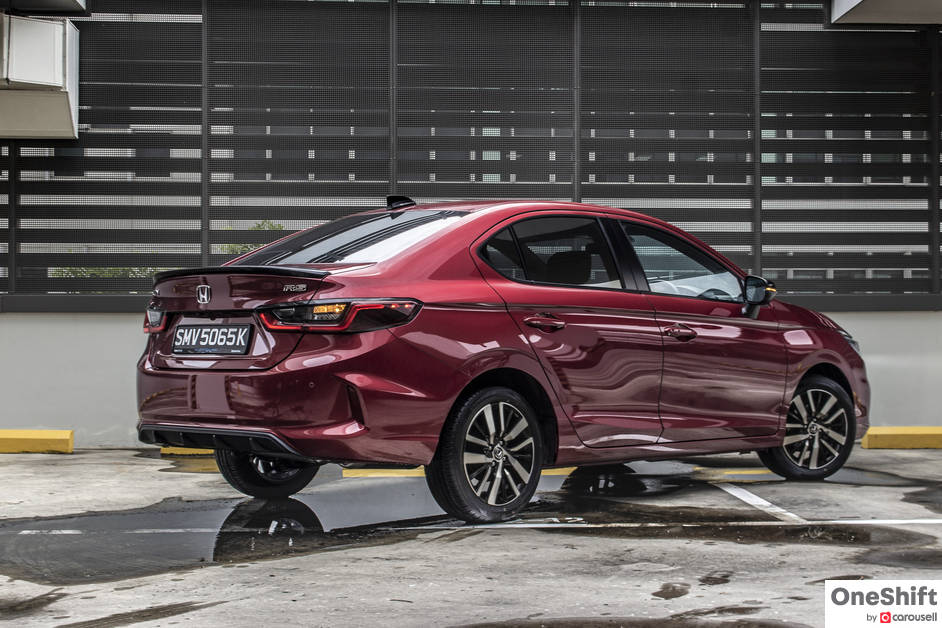
For those who may have safety higher on their list of requirements when purchasing a car, the City has also been awarded a 5-star rating by ASEAN NCAP, thanks to the use of high tensile steel and a suite of active safety features.
Hyundai’s all new Avante may be a hit or a miss with its aggressively bold styling, but we must say that their bold approach in building the next generation Avante has surely paid off.
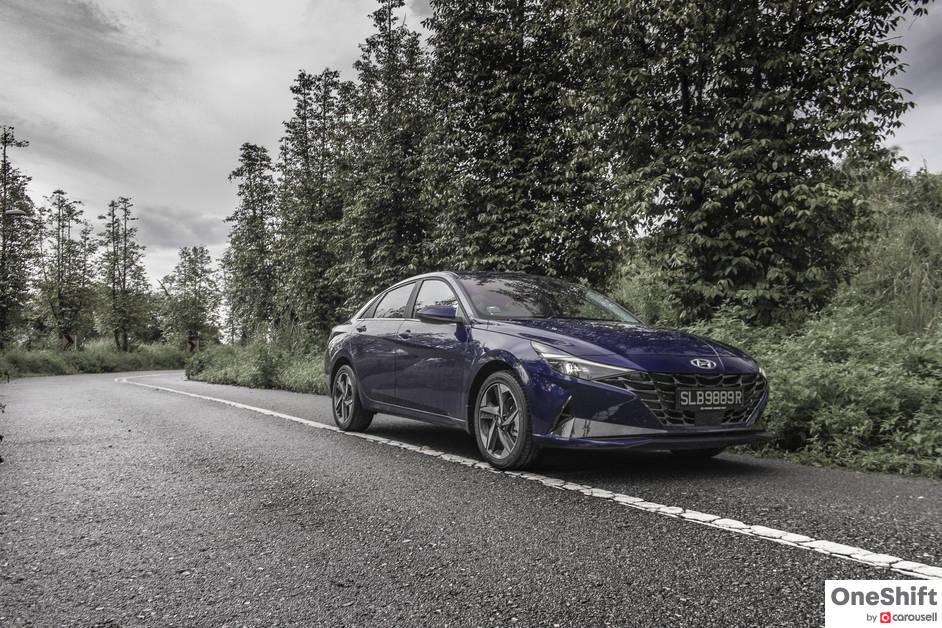
The new Avante was developed with the intent of not to run with, but to beat the pack, and the Koreans have certainly made a strong statement with their compact sedan. The Avante’s build quality, while it is a vast improvement over the car it replaces, matches, or we dare say, is better than many offerings in the market.
Their bold design is also seen in the interior, with its cockpit-inspired dash. The Elite trim, which is their range-topping car, boasts a full list of features; our favourite being ventilated front seats for improved comfort. This is also the first Avante to feature a digitised instrument cluster, which has become commonplace with luxury cars. Other features include the ability to pair two Bluetooth devices, adding a little more depth in how you can utilise the car’s infotainment system; while those on the go can charge their mobile devices with the built-in wireless charger.
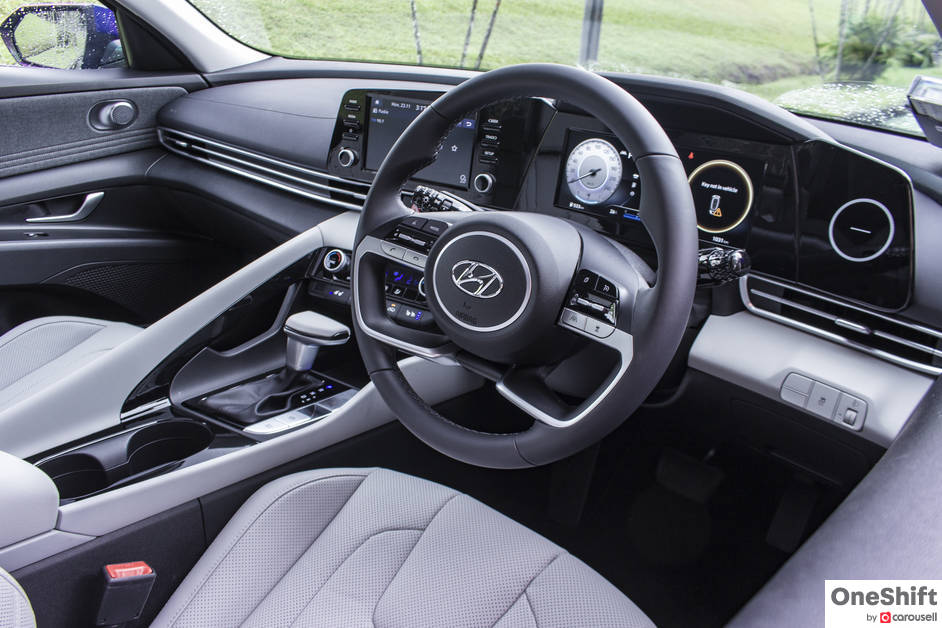
The new Hyundai Avante is powered by their new Smartstream Gamma II 1.6 litre four cylinder engine, which features dual port fuel injection, and dual variable valve timing; and is mated to an IVT (more commonly known as a CVT). Hyundai has developed the transmission in-house, and instead of a pushbelt, their IVT utilises a chain, translating to a firmer delivery of its drive. This results in a smooth-yet-responsive driving experience. The Avante boasts 18.lkm/l, one of the best figures we have seen in a compact sedan.
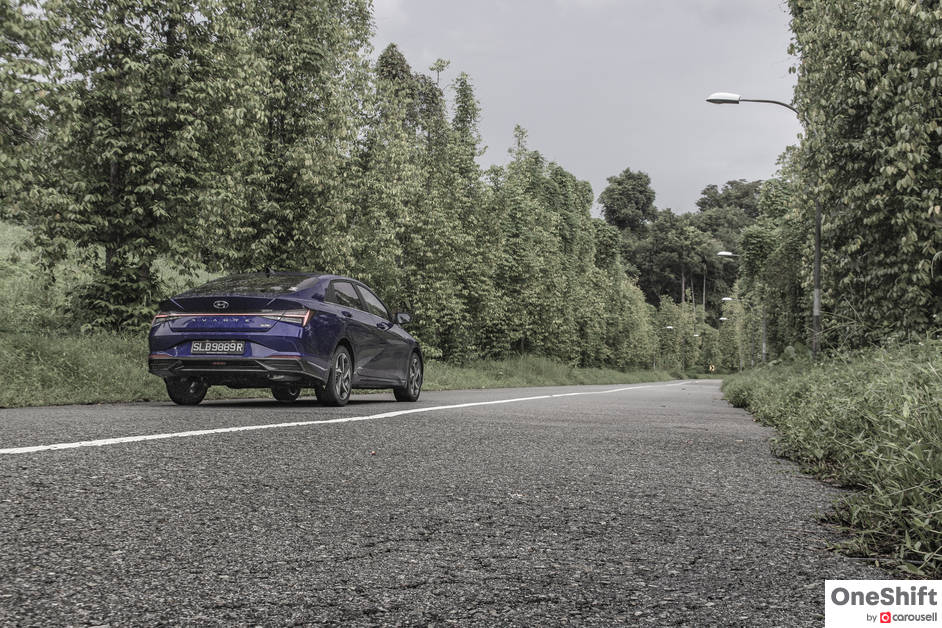
Safety-wise, the Avante (Elite and S model) is equipped with advanced driver aids, like Forward Collision Avoidance Assist, which is able to recognise other motor vehicles, pedestrians and even cyclists, and react to the situation. Lane Keep Assist, which helps you keep your vehicle in its lane, and is complemented with Lane Following Assist, which guides the car when lane markers are unclear; this is done by following the path of the vehicle in-front.
The BMW 330i won last year’s Car of the Year, and for a good reason. The Executive Compact Sedan drives like how a sports car would, but then again we all know that the 3 Series is always engineered with the M3 in-mind.
But what makes the 3 Series even better, is BMW’s introduction of its Operating System 7, which to us, takes things to a whole new level. The voice activated infotainment system recognises natural speech, and has on it some nifty party tricks, like its Reversing Assistant, that allows you to back the car for a good 50m, retracing the path you had just taken… great when you have driven into a narrow dead end.
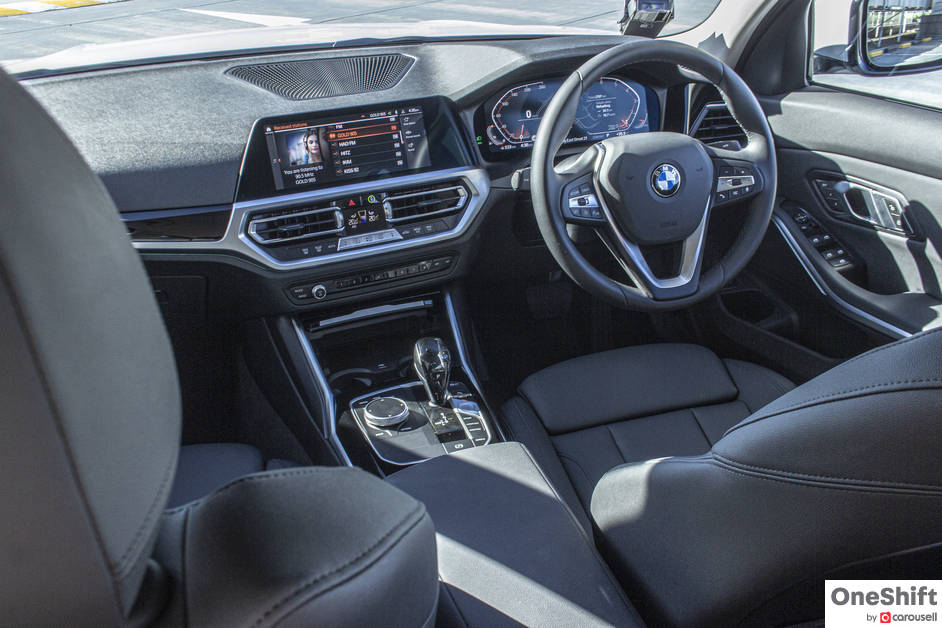
The 3 Series boasts very good passenger accommodation, and has a class-leading 480 litre boot.
The BMW 318i is the brand's entry 3 Series offered here, and what is impressive is that features-wise, the 318i has many of the same as its more powerful siblings.
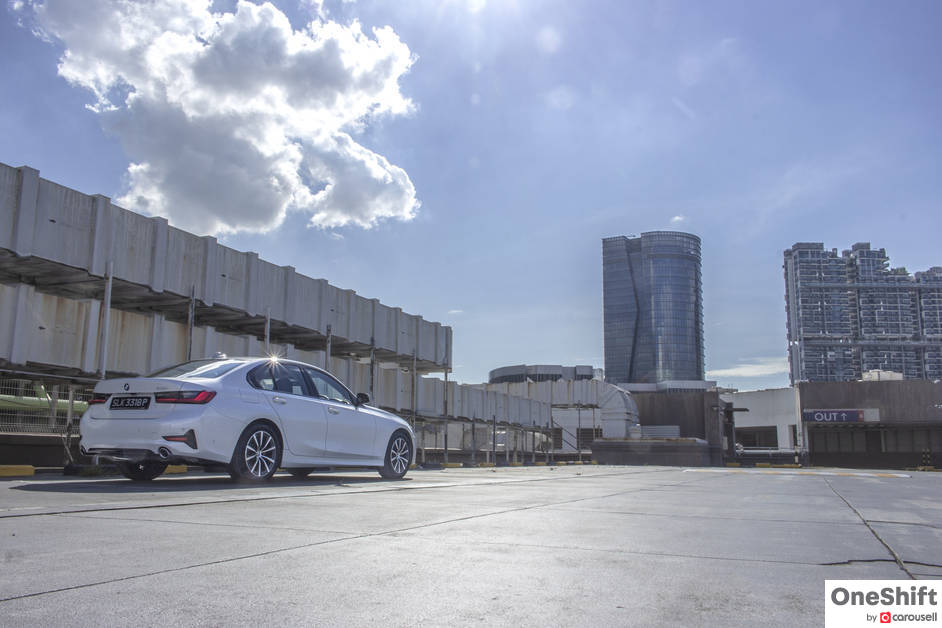
While the 2.0 turbocharged engine is tuned to deliver 156hp and 250Nm, it does not feel sluggish at all. In-fact, it is heaps of fun around the bends, and refined on the highway, ensuring that ownership will be one that brings joy.
Ever since the first Lexus ES was launched, it has been a popular go-to car for the “towkay”. A well packaged sedan, with heaps of legroom for those in front and the rear, and a refined driving experience.
The ES 300h offers no less a refined driving experience, and interestingly, engineers at Lexus have managed to create more space in their mid-tier sedan… even more than what is available in their flagship LS.
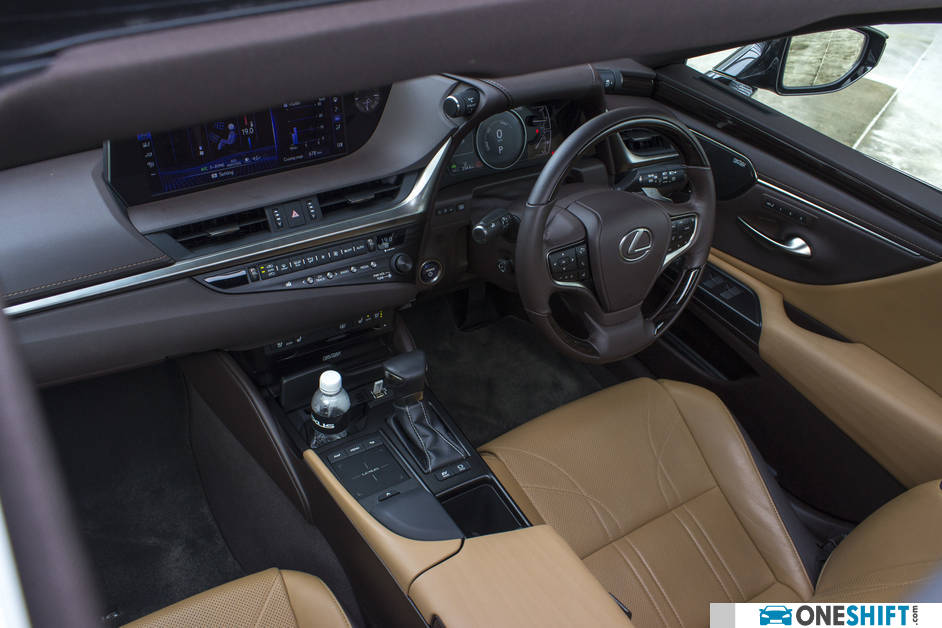
Lexus often boasts of Takumi craftsmanship, and the ES is truly a well-built sedan, featuring heaps of high quality leather and lacquered wood finishings. The ES is also equipped with a premium Mark Levinson audio system for a more enjoyable driving pleasure.
Lexus being Lexus, has even gone the extra mile to improve on the car’s straight line stability, featuring coil springs on opposing sides that are turned in opposite directions.
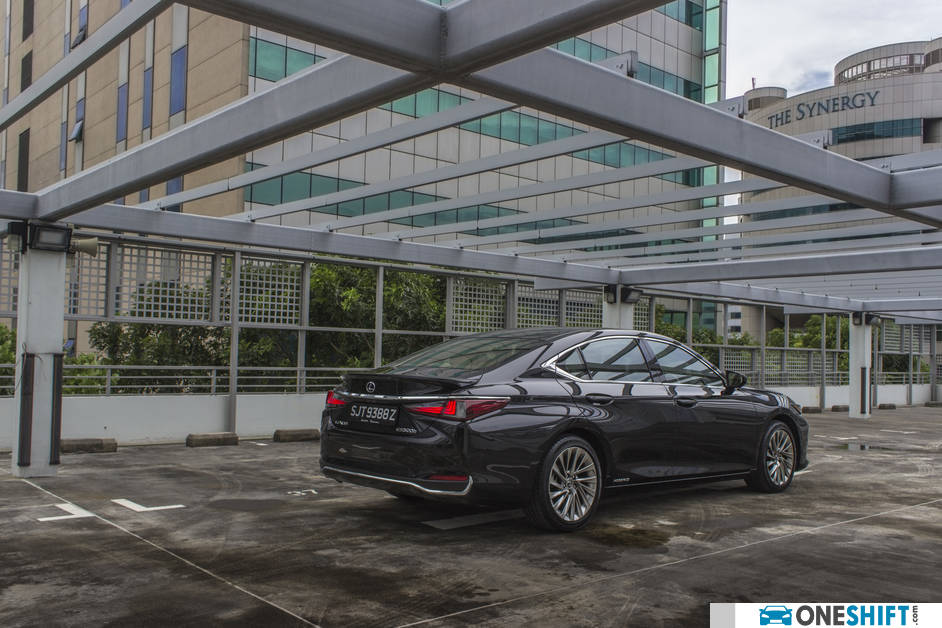
Power is provided by a 2.5 litre engine, and it receives an additional boost from a hybrid drivetrain, that runs in parallel to the engine's drive, allowing for a seamless switchover. Mated to a CVT, the ES delivers driving refinement that is difficult to match.
The facelifted BMW 7 Series has commanding road presence. But what makes this flagship sedan from the Bavarian manufacturer great, are the innovative features, like its Active Cruise Control with Stop & Go, Parking Assistant Plus and Reversing Assistant.
The Operating System 7, is among the best, and it does an excellent job in recognising natural speech.
The mighty 7 is also equipped with a self-levelling air suspension for added passenger comfort. Soundproofing elements in the B-pillars which are further complemented by thick 5.1mm laminated glass ensures that the 7 Series delivers among the most refined rides available.

Under the hood, the BMW 740i is powered by BMW’s signature inline-six, delivering 340hp and 450Nm, fed with the help of twin-scroll turbochargers, High Precision Injection, Valvetronic fully variable valve timing and Double-VANOS variable camshaft control.
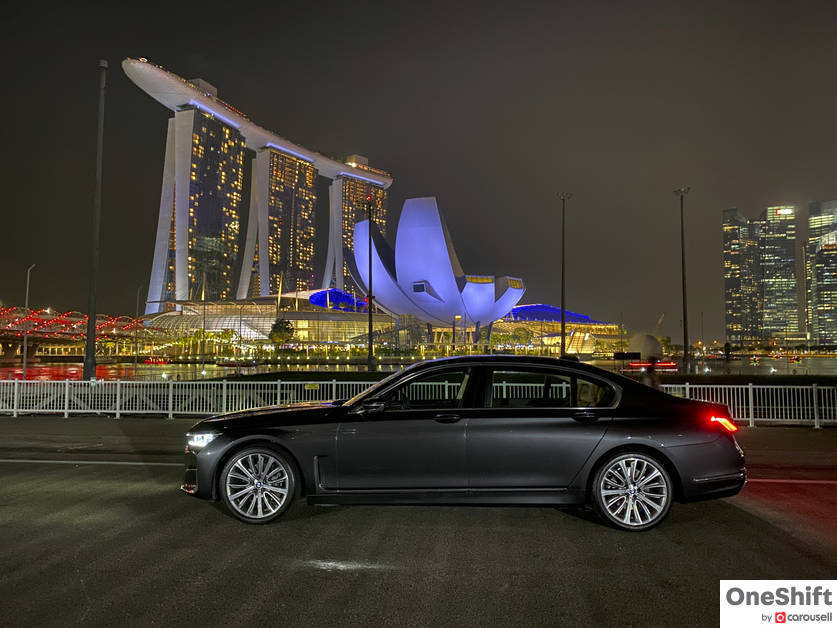
Very impressively, the 7 Series also handles like a dream, and with the help of its Integral Active Steering, which also steers the rear wheels, the 7 Series can take to the bends like a smaller sedan, while offering stable lane-changing at high speeds. We know, cause we did take the 7 Series up some mountainous roads in Poland.
The mini MPV is quite an interesting vehicle. Essentially a tall hatchback, or a shortened MPV, minus the last row of seats, it is one of the viable alternatives available if you do not want to go down the SUV route.
The Mercedes-Benz B-Class offers this very versatility, with a badge renowned for luxury. The B-Class shares many of its interior components with its premium-class siblings, from its single panel display, featuring twin 10.25” screens, one which functions as an instrument cluster.
The B-Class also boasts the brand’s nall new MBUX (Mercedes-Benz User Experience) multimedia system, that utilises Artificial Intelligence to learn from its users. Owners can expect a flat-bottomed 455 litre boot, that expands to 1,540 litres.
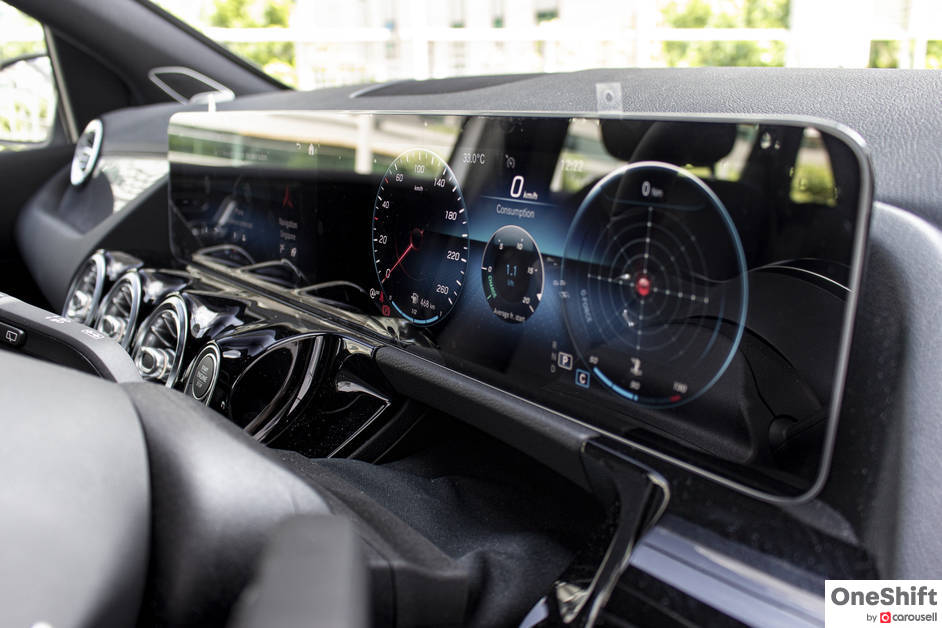
The B200 is powered by a 1,332cc turbocharged four-cylinder engine which boasts an innovative 0.2mm thick inner bore mirror coat which reduces piston drag, improving efficiency. The engine also boasts cylinder deactivation technology, which shuts two of the four cylinders down during cruising, for improved efficiency.

The B-Class also has an optional Adaptive Damping suspension system, which allows the suspension firmness to be dialed up or down, delivering an even more comfortable ride.
If you are looking for a full-sized MPV, the SEAT Alhambra seats up to seven in comfort, and what we like is that they have put thought into how children can be accommodated, with integrated booster seats. The Alhambra is also surprisingly very car-like.
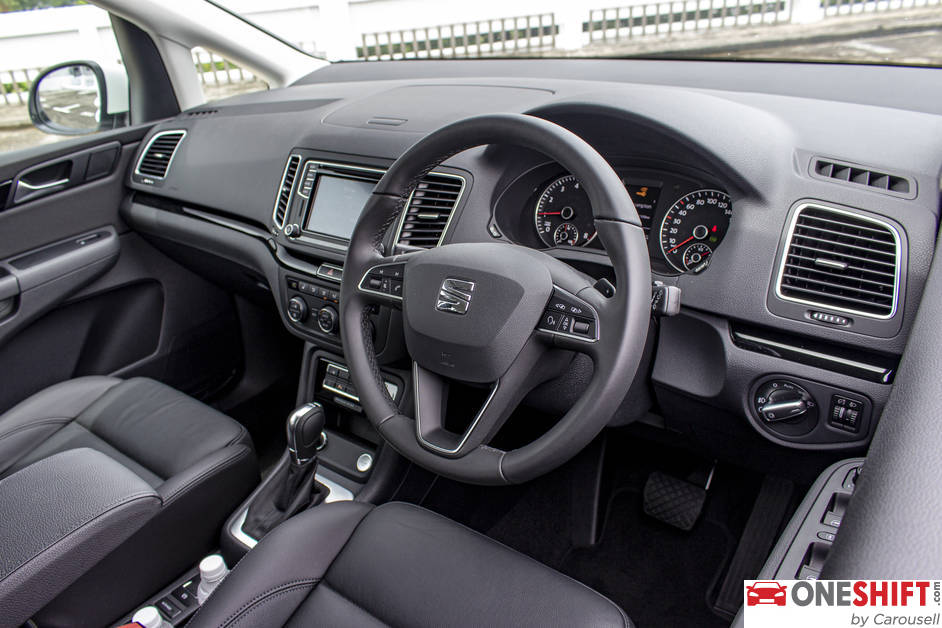
SEAT offers the Alhambra with a frugal 1.4 litre turbocharged engine, good for 150hp and 250Nm, which does a good job of hauling the extended family, and whatever else the day throws at you.

Three words best describes the Skoda Octavia RS245 - bang-for-buck.
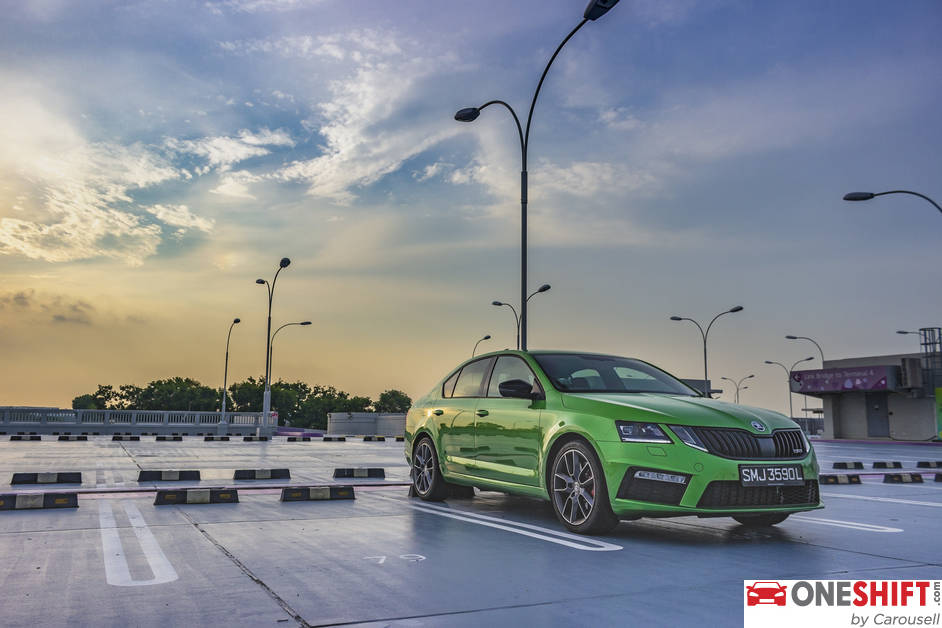
The Octavia RS245 has all the same practicality offered by the vanilla Octavia Sedan, but under the hood, lies a high-powered 2.0 litre that delivers 245bhp and 370Nm, paired to a dual clutch 7-speed automatic transmission.

The RS245’s rear suspension is also an independent setup, designed to deliver the handling, fitting of the car’s performance. Fitted with an electronically-controlled Limited Slip Differential (LSD), the RS245 feels planted around the corners, and does well with keeping up with the big boys, while with the practicality you can expect from a very good family sedan.

It took Alfa Romeo two generations to build a rear-wheel drive car again, but when they did, it was nothing short of impressive. The Alfa Romeo Giulia is a car built with drivers in-mind. Perfectly balanced, with the help of the transmission sited at the rear, the Giulia is a strong attempt from the Italian brand to win the hearts of driving enthusiasts.
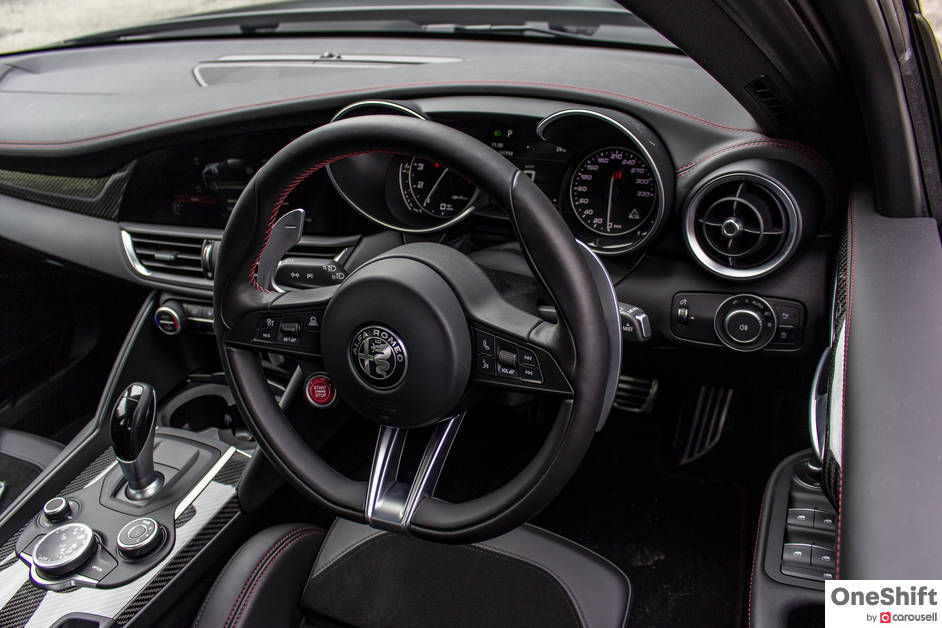
The Quadrifoglio is their high performance model, which is powered by a 2.9 litre bi-turbocharged V6, paired to an 8-speed automatic transmission, delivering a whopping 510bhp and 600Nm. Impressively, the engine delivers its drive in linear style, quite like how a natural-breathing engine would. Nought to 100km/h is achieved in an almost supercar-rivaling 3.9 seconds. We love how the engine rev-matches the transmission when dropping a gear, and that adaptive suspension that is able to adapt to different road conditions.
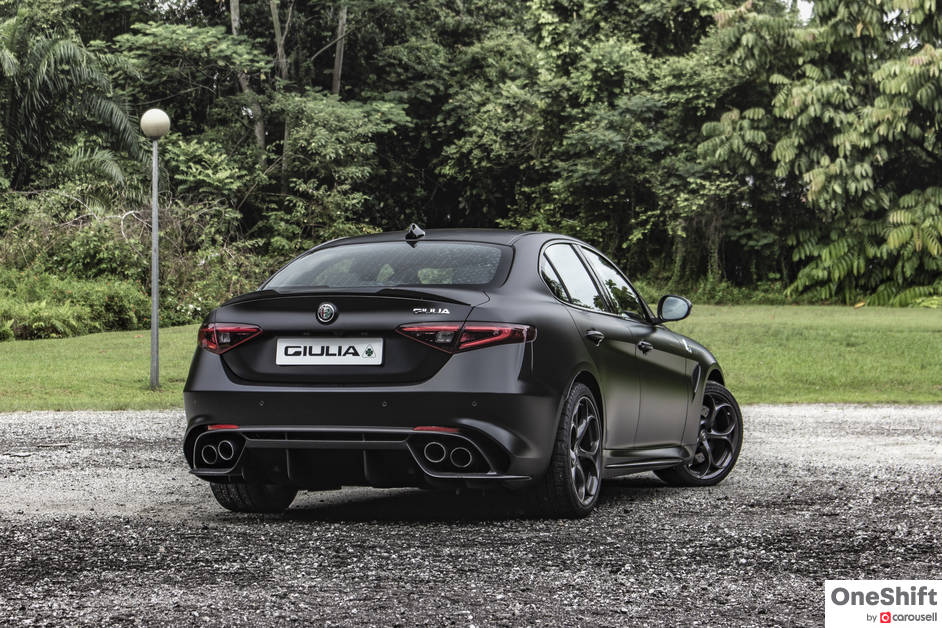
The Quadrifoglio offers drivers with not only great performance, but an equally great soundtrack to match, all in a car that is quite simply easy to live with.
The second generation premium SUV from Mercedes-Benz is a vast improvement over the car it replaces. The new Mercedes-Benz GLA drives well, and boasts much better quality and interior space.
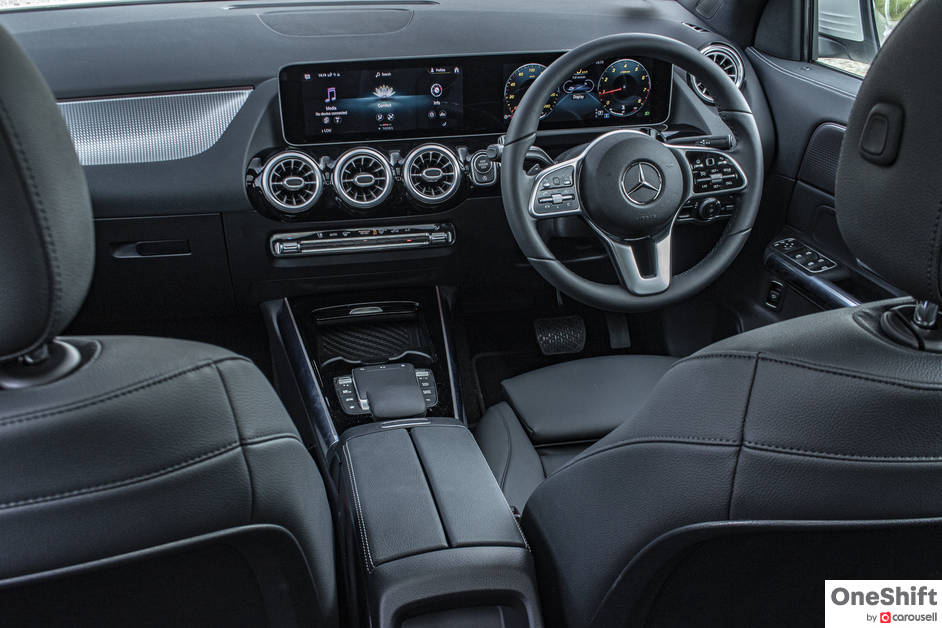
The new car, like its premium stablemates boasts the brand’s new MBUX infotainment system (Mercedes-Benz User Experience), and features dual 10.25” screens, one that functions as the digital instrument panel. Passenger room has also increased, and so has comfort.
The GLA is also powered by the same 1,332cc turbocharged inline-four as its stablemates, and is mated to a 7G-DCT, directed to the front wheels.
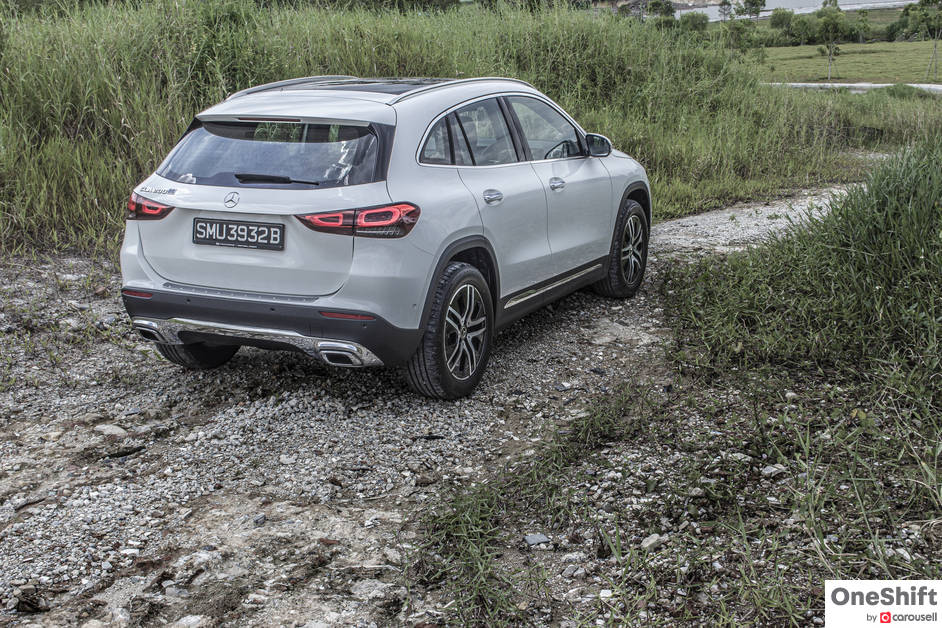
But where it does shine the most is in its build quality and in its technologically advanced user interface.
‘Crossover’ is a relatively new buzzword that has been used loosely, almost like how a 4-doored coupe is to a sedan. But in this case, there are 2 variants of the Audi Q3, the SUV model, and this, the Sportback. And between the two body shapes, the Sportback variant is just simply more appealing.
The Q3 also sports their MIB 2+ infotainment system, fronted by a 10.1” MMI touch display that supports doctor-quality handwriting.

The Q3 Sportback boasts heaps of larger-than-life styling, from its massive hexagonal grille, to its flared wheel arches, hinting of its quattro go-anywhere ability. The car referred to here, does have a quattro drivetrain, and is paired to a 2.0 turbocharged four-cylinder, producing 180ps and 320Nm. A slightly firm suspension means that handling has a sporty lean to it, which makes it simply a joy to drive.

This small BMW gave us one of the best driving experiences we had in 2020. The 1 Series BMW has certainly courted controversy with its front driven architecture, but it is actually a well-executed car with plenty to offer.
As we expected, the Bavarian brand also has a performance oriented model, while the M135i has many carryovers from the vanilla 1 Series, it does boast all-wheel drive, and a fire-breathing 2.0 under the bonnet. This engine is the most aggressively tuned variant that BMW has to offer, delivering 306hp and 450Nm, and all of this points to a car with very punchy performance. The M135i also sports a mechanical Torsen limited-slip differential, that responds quickly locking the drive between the front wheels when slip is detected.
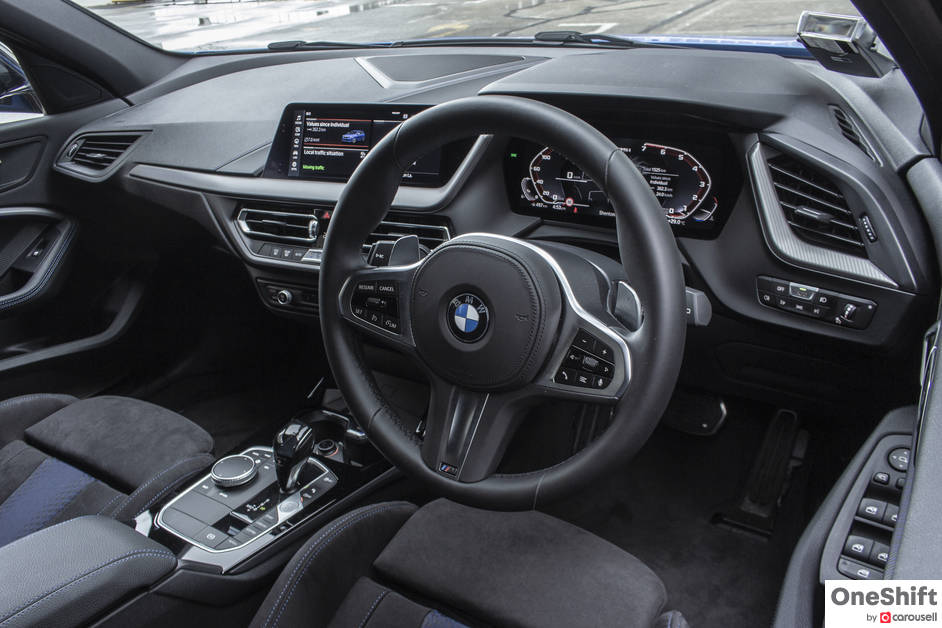
The small BMW hatchback also boasts the brand’s new Operating System 7 that is activated with the phrase “Hey BMW!”. This allows you to voice command an extensive list of functions, including putting the car into ‘Sport’ mode, simply by saying ‘Hey BMW, I’m Bored’.

Beyond the flashy tech, the M135i is serious fun to drive, while still being a practical car to own.
Since its launch, the BMW X3 has been one of our favourite SUVs, well engineered from the ground up, and true to its SUV body shape, it also has some actual off-roading capabilities; including being able to ford through a stream to a depth of 500mm.
One of the efforts of BMW is the eventual electrification of the bulk of the range of their cars. The xDrive30e is one of the newest additions to BMW’s X3 range, offering their lineup a PHEV (Plug-in Hybrid Electric Vehicle) variant.
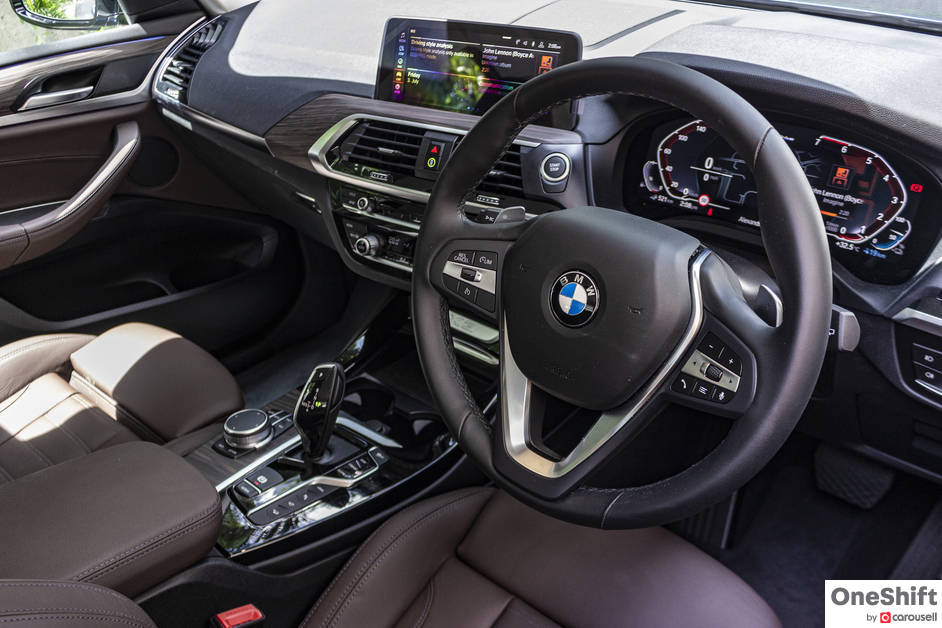
Power is from a 2.0 turbocharged petrol engine producing 184hp and 300Nm, with the electrical drivetrain ramping this up to 292hp and 420Nm, delivering quite an entertaining drive.
The X3 also now comes with their new updated Operating System 7.0, which features voice activation. The 2,864mm wheelbase translates to very good passenger accommodation, and its boot, even with the battery included, is still at a practical 450 litres.
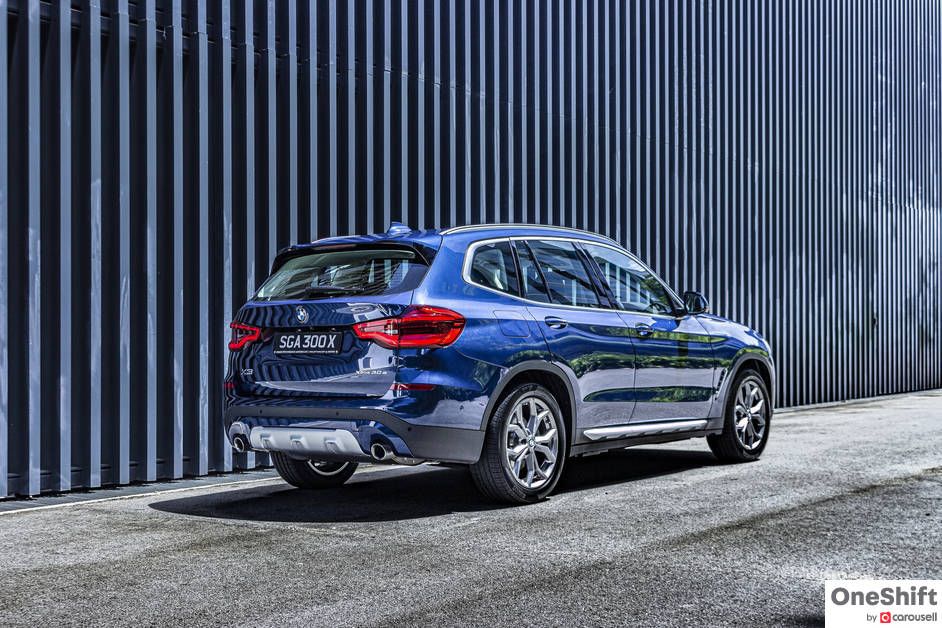
While we did mention the PHEV variant of the BMW X3, the middle-of-the-pack X3 xDrive30i model deserves its respective win, since it delivers the best balance, in terms of quality, passenger accommodation and driver satisfaction, among its peers.
The BMW X3 is impressive from the ground up, and with the M Sport suspension, delivers roadholding capabilities that could simply put some performance road cars to shame.
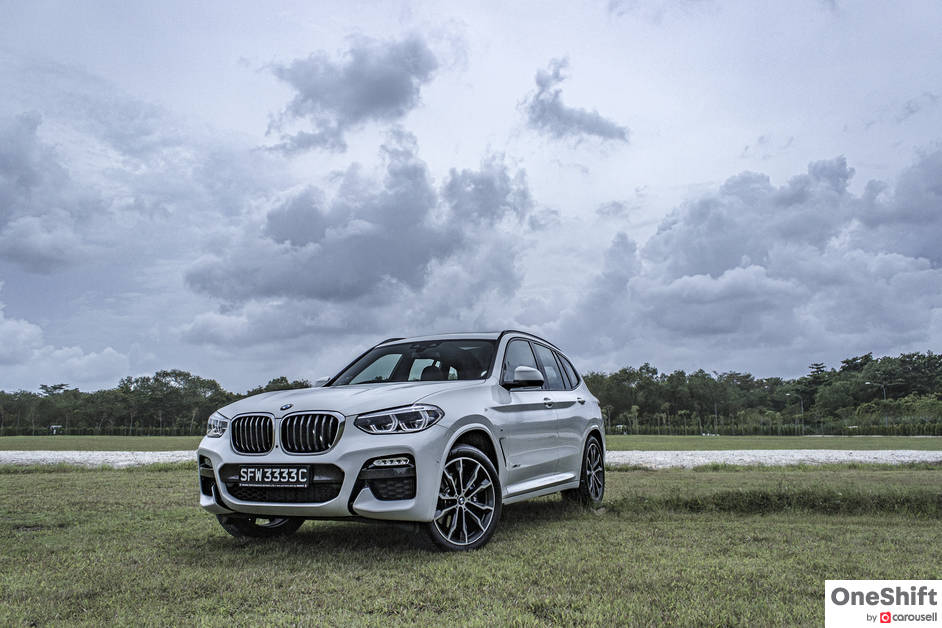
Under the hood, you get a 2.0 that pushes out 252bhp and 350Nm, and is mated to an 8-speed automatic transmission, sending power to both front and rear wheels. Proof of its performance is in the pudding, with its century sprint time clocked in at 6.3 seconds.
Handling aside, the X3 boasts a practical interior, and sports a 550 litre boot that has a double floor for even greater versatility.
The Defender name would easily strike a chord with many. The Land Rover brand has been synonymous with gruelling journeys of great exploration. For those who like the military, the Defender and its predecessors have long been serving in the name of defence, often finding themselves deep in the heart of peacekeeping efforts.
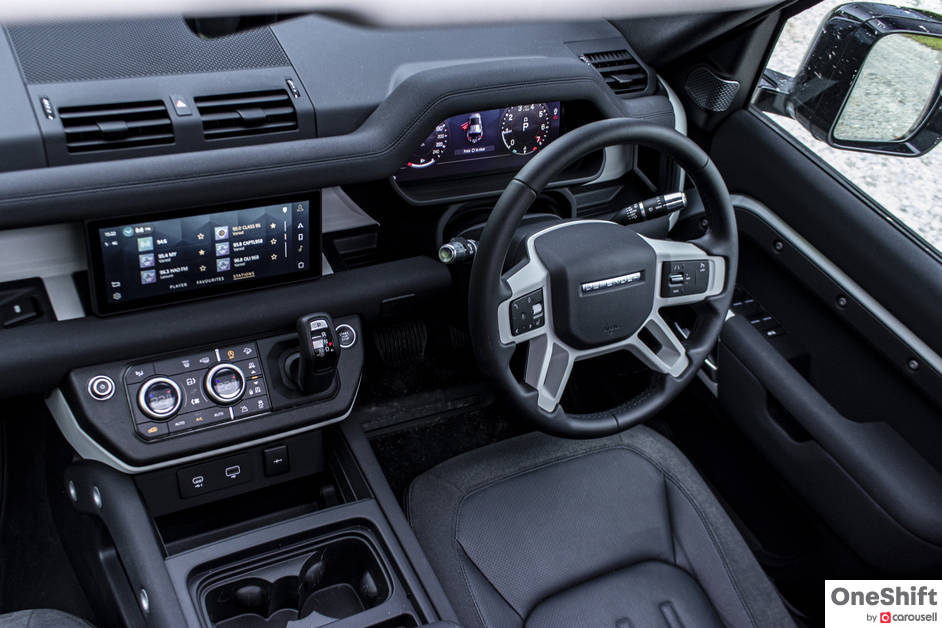
The all-new Land Rover Defender certainly has large shoes to fill, but there is even more! Modern times, calls for even greater heights of ingenuity. Land Rover has stepped up to the challenge of creating the ultimate off-roading SUV, that still displays impeccable road manners… and that to us is an impressive win on its own. With close to 70 years of history behind it, the new Defender is designed to take the Land Rover brand into the future.
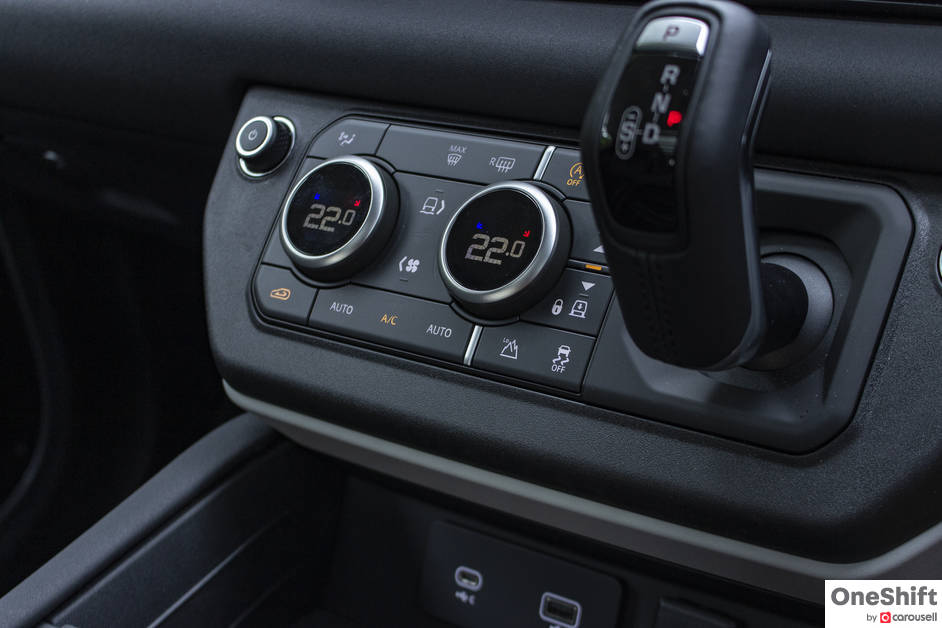
The new car is equipped with their patented Terrain Response system, that allows you to even fine-tune how the car behaves in the most challenging environments, by locking and unlocking your axles via the Pivi Pro touchscreen… essentially, you can get yourself out of a difficult off-roading situation without even getting your boots muddy. The Defender also boasts up to 500mm of suspension play, ensuring that you will likely get more wheel contact where it is crucially needed.
The advanced tech in the 3.0 P400 variant, is matched by how its engine delivers its drive, with the help of a turbocharger, and an electrically driven supercharger… coupled with mild-hybrid drive technology. All of this ensures that the 2,361kg SUV can be propelled to 100km/h in just 6.1 seconds.
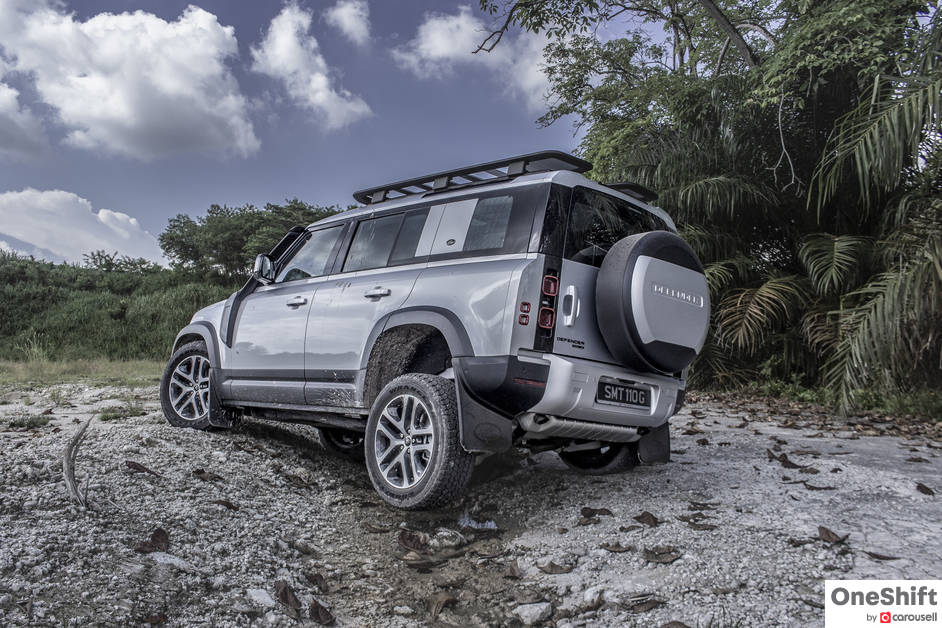
So if you are looking for a car stunningly beautiful enough for roads - paved, comfortable where the paths are less beaten, and willing to go above & beyond where there are no paths at all, the new Land Rover Defender has is simply the best 4x4xfar.
Just like its sedan sibling, the Alfa Romeo Stelvio Quadrifoglio boasts 50:50 weight distribution and makes 510bhp and 600Nm, from its 2.9 litre V6.
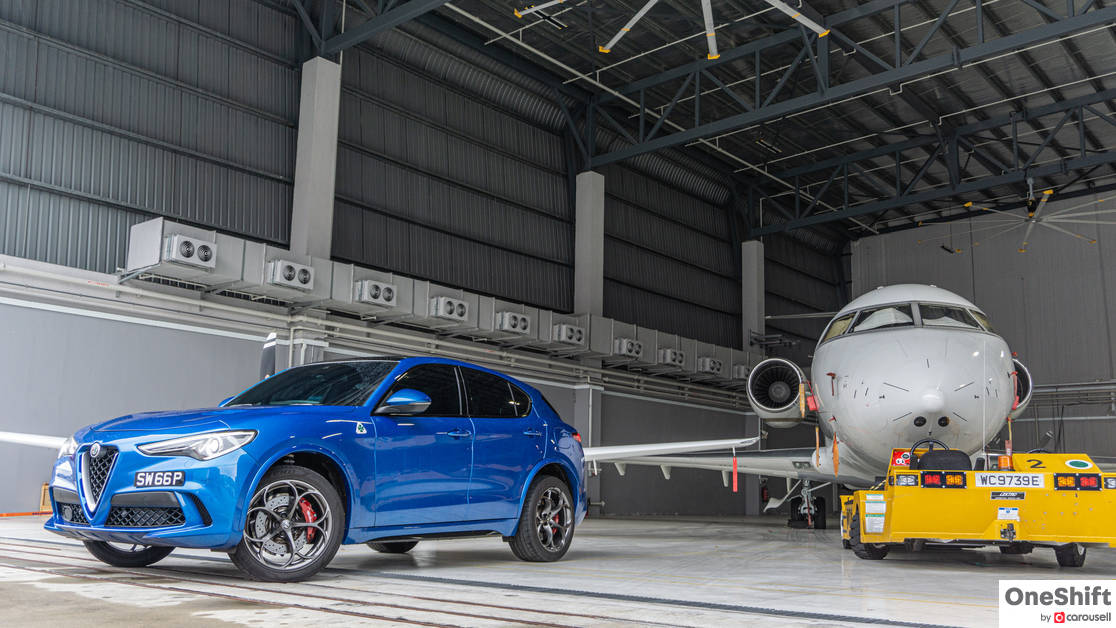
The Stelvio benefits from intelligent Q4 AWD that ensures that all its wheels can do their part in hauling the SUV when required, but most importantly, remains as an RWD car in most cases for that purer driving experience. The Stelvio delivers blisteringly quick acceleration, clocking the 100km/h mark in only 3.8 seconds.
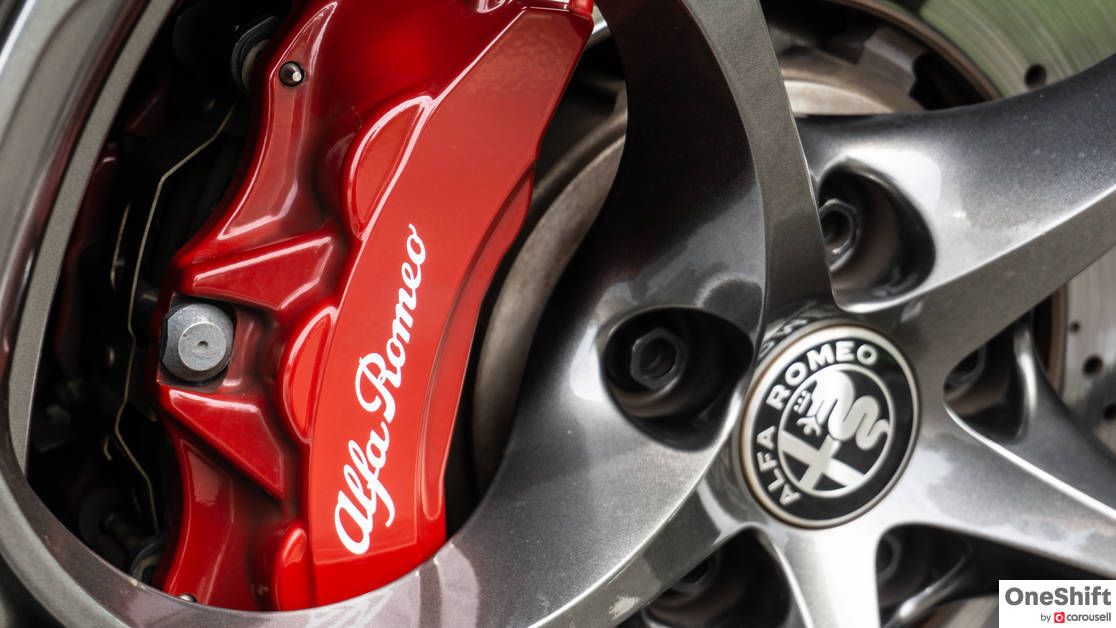
Drivers can indulge in design elements borrowed from Ferrari, like its red start/stop button mounted on the steering wheel and the large metal paddle shifters fixed to the steering column.
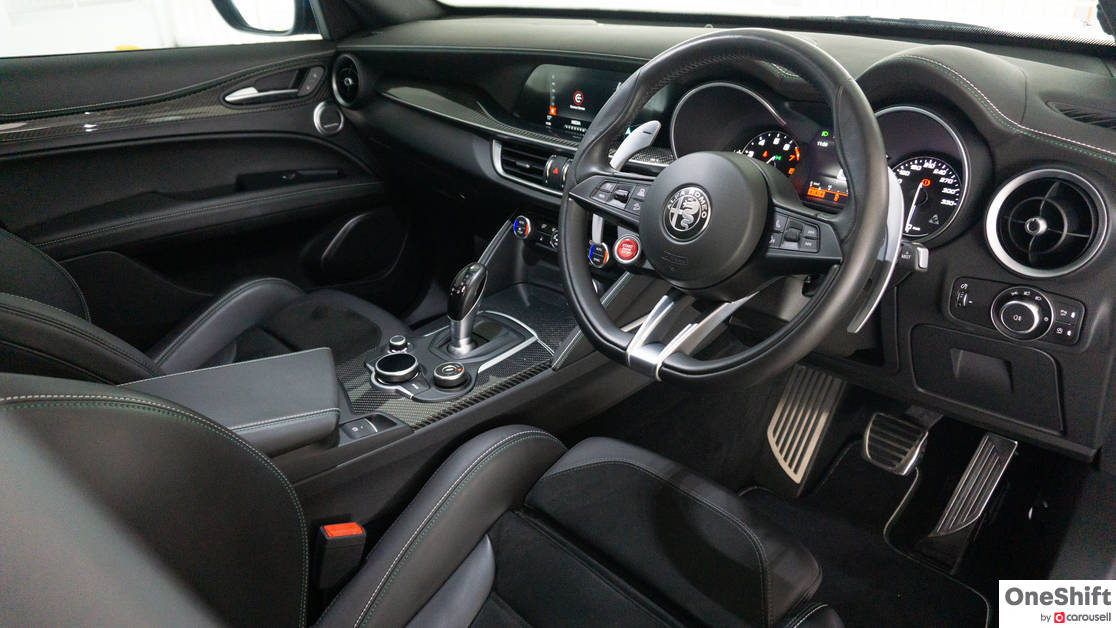
When BMW set out to build the next 8 Series, times were very different, compared to when the first car bearing the 8 badge was built. Customers now wanted a car that could do more. In this case, simply be more practical.
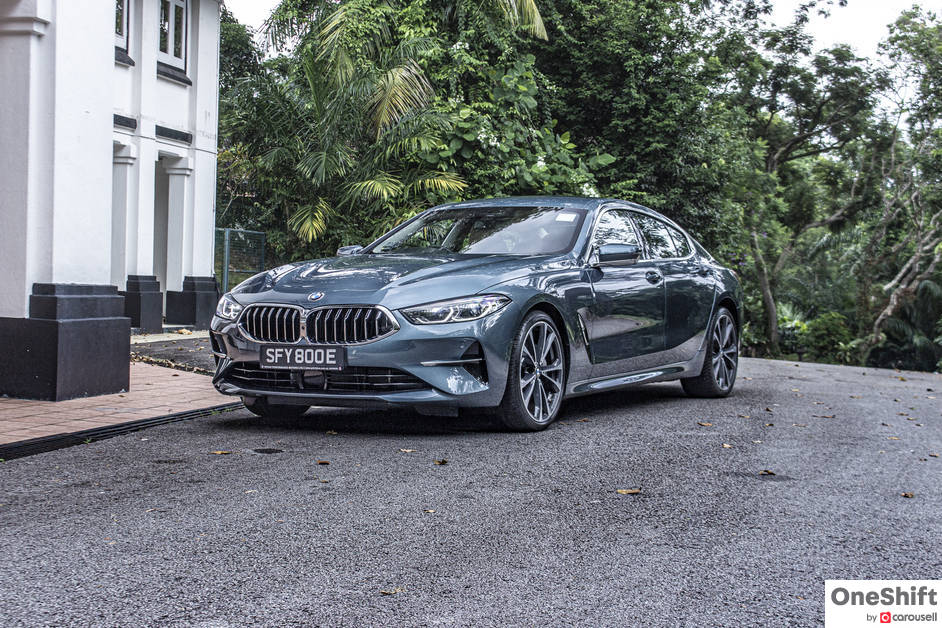
BMW has responded well when delivering their flagship coupe. While there is an actual 2 door model, and a droptop, there now is a one with 4 doors, or in BMW talk, a Gran Coupe.

The 8 Series Gran Coupe’s styling, while sleek and attractive, is also practical, with enough room to accommodate passengers at the rear. The 8 is built utilising BMW’s carbon core technology, which can also be found in their flagship sedan, the 7 Series.
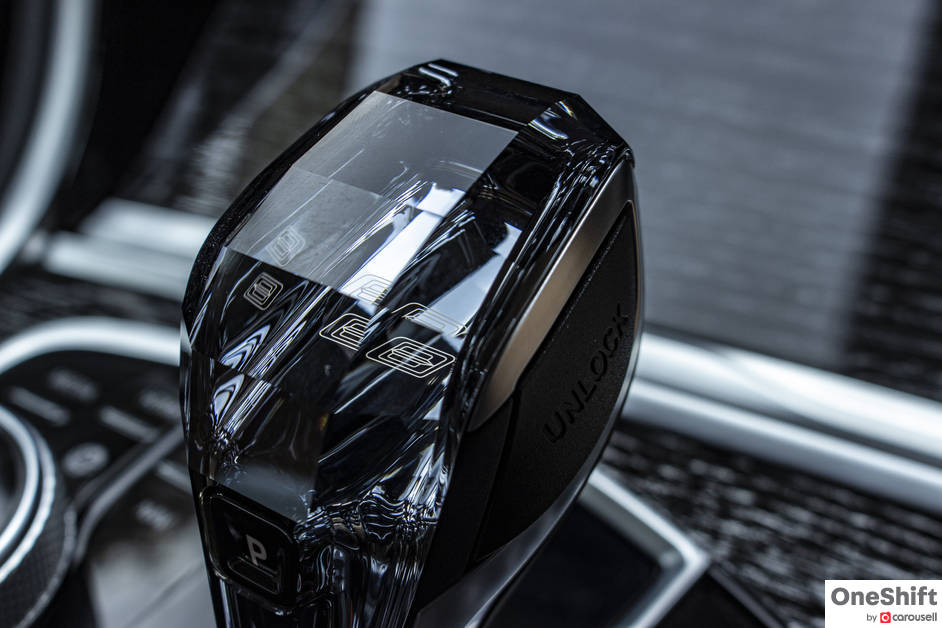
BMW’s Operating System 7 that is found in their new cars, also makes its way into the 840i, allowing for voice-activated commands. While it is badged as a coupe, it does boast sedan-like practicality, with a 440 litre boot, which BMW claims is able to carry up to three golf bags.
The 840i is powered by BMW’s signature in-line 6, and paired to an 8-speed transmission. We like that unlike its 850i variant, the 840i is simply a RWD affair, meaning that the drive feels even more natural.
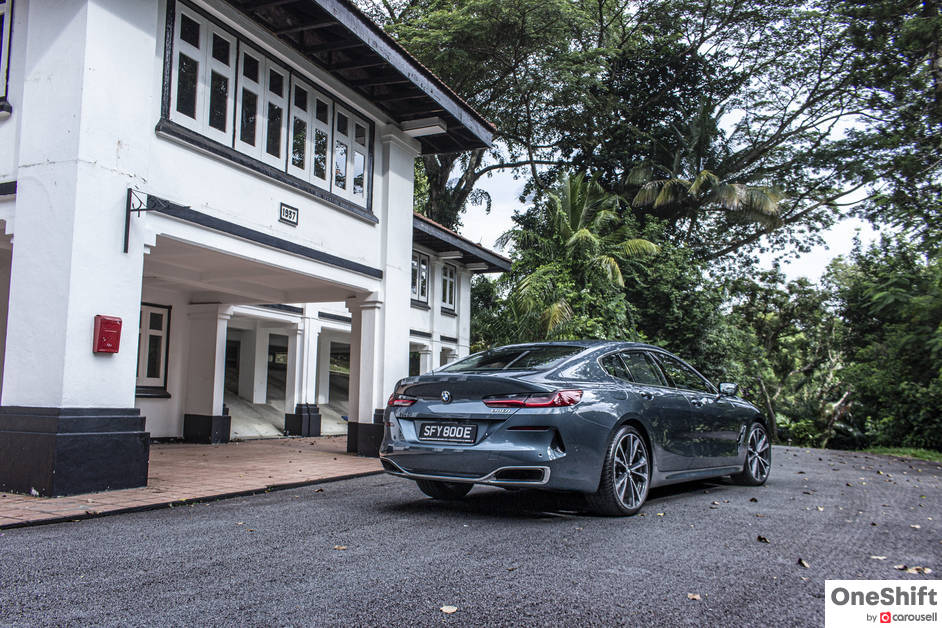
We also love the powerful statement the 8 Series Gran Coupe makes, but beyond making a statement, it delivers a satisfying drive, one which you can savour.
With over 44 million Corollas sold worldwide since its inception, The Japanese automotive giant has now fielded one with a hybrid drivetrain.
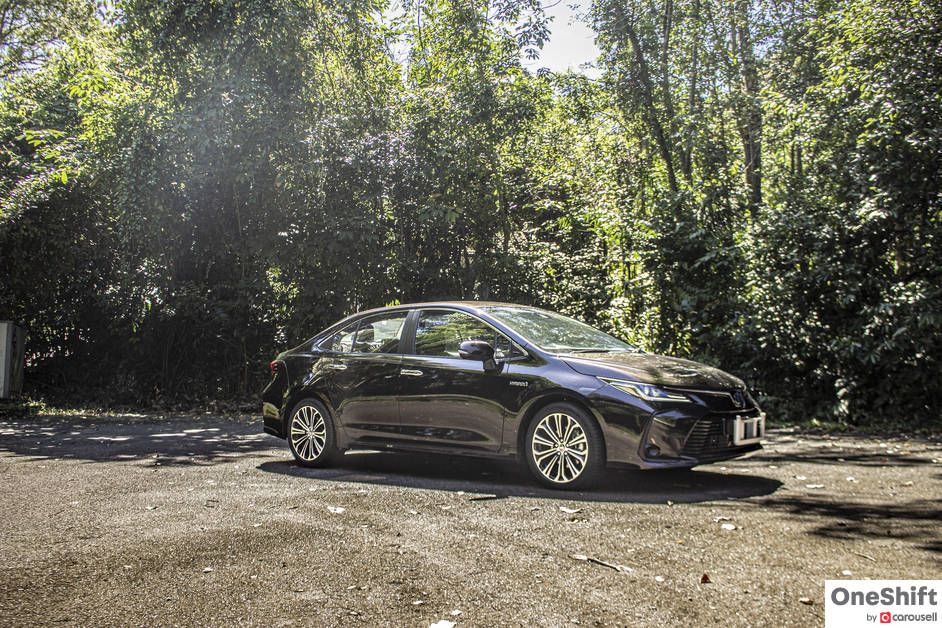
We already like how the new Corolla is built. Quality has seen improvement over the last three generations of cars, and you can trust that the interior is well-planned. Not only does the Corolla have good passenger accommodation, it also has good cargo room at 450 litres, with enough width to contain your golfing gear. Since the Corolla is built to cater to a wide range of buyer profiles, it is one of the few cars to still carry on it a full-sized spare.
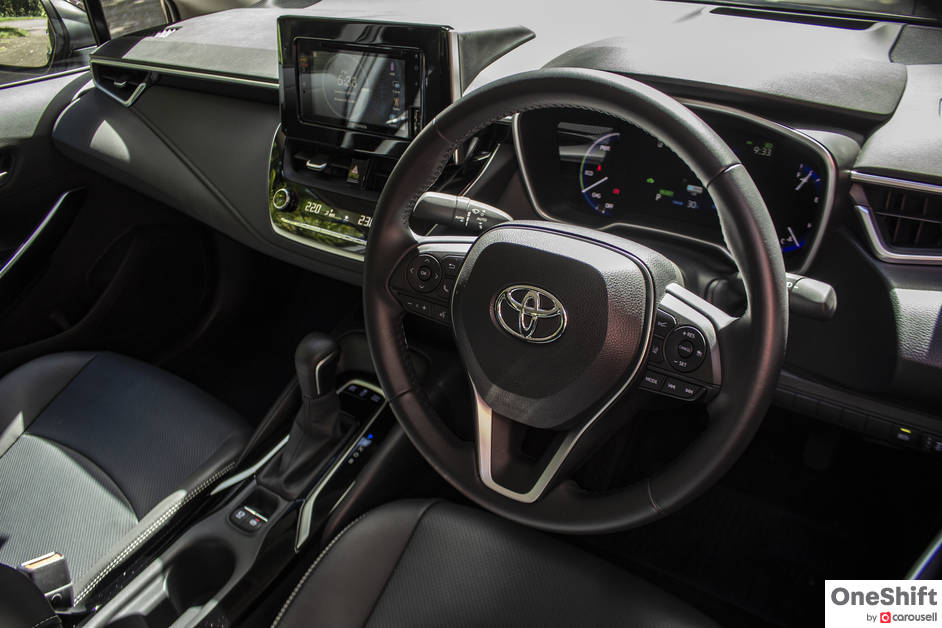
The Corolla Altis 1.8 Hybrid which utilises the same 1.8 litre drivetrain and hybrid drive unit as the Prius, and produces in-all 121hp and 142Nm, giving you impressive mileage of 22.7km/l… delivered in a smooth and relaxed fashion. And Just like its regular 1.6 litre sibling, it does handle remarkably well.
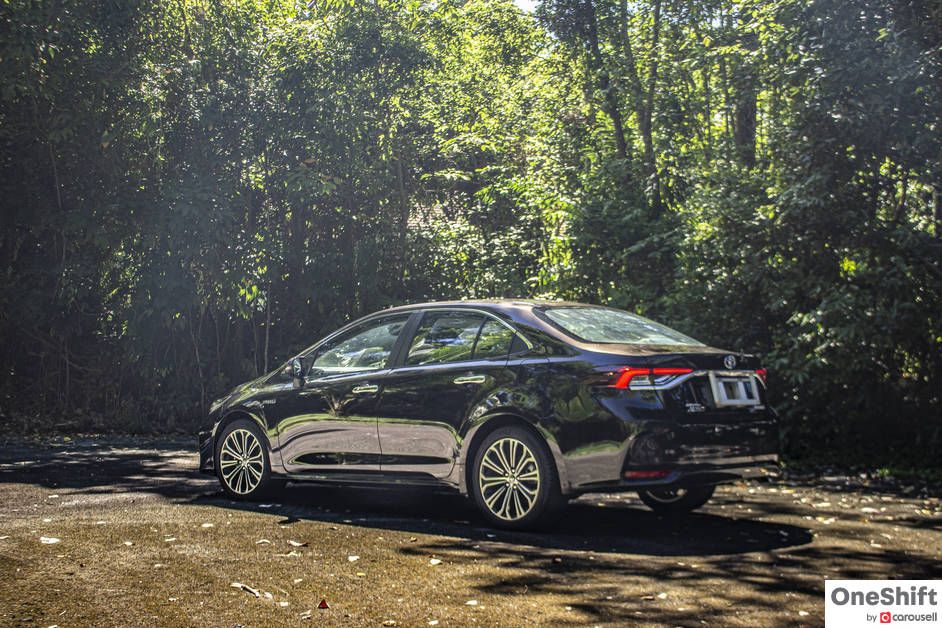
With MG’s heavy focus on building EVs, the ZS is the other car that completes their range for 2020, with the other being the petrol-powered HS.
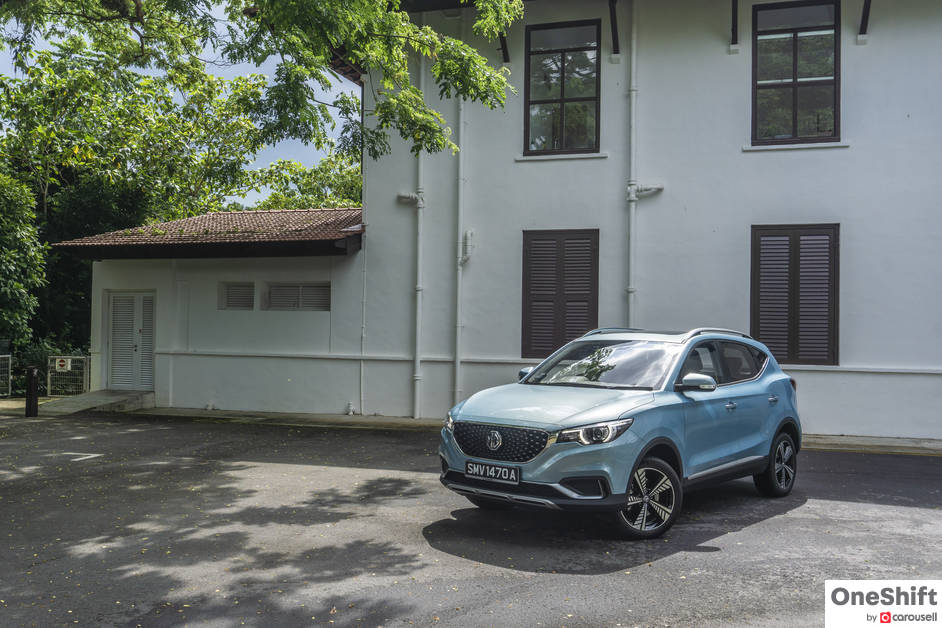
While the Korean brands have been on a roll, producing compact-sized EVs, MG’s offering has an attractive price point, making it easier for those who may want to switch to an EV. The MG ZS accommodates four adults with ease, and performs well.
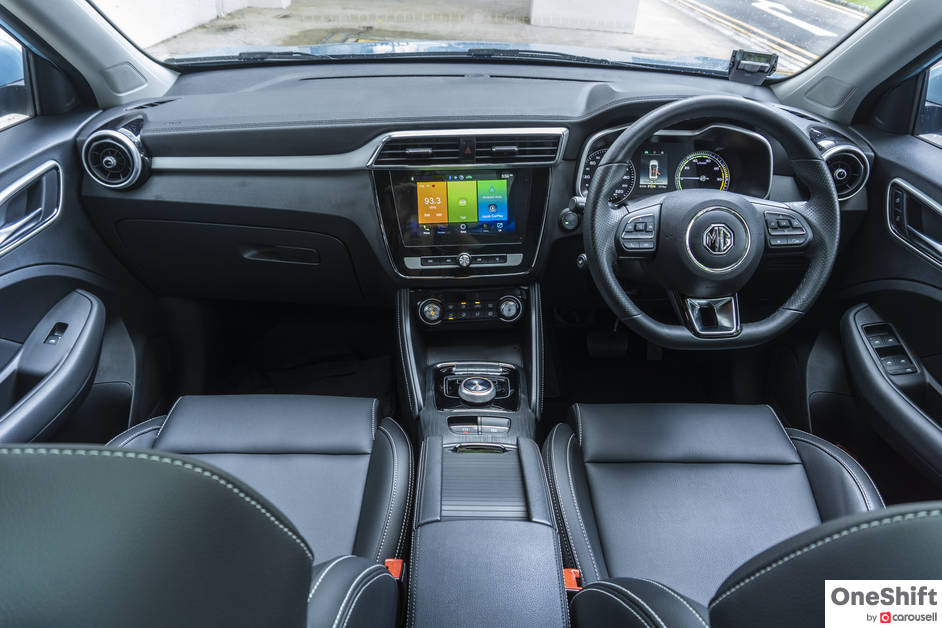
With 353Nm on-tap, the MG ZS is especially nippy in city traffic, with it being able to accelerate briskly from the get-go, and it does this while offering a quiet and comfortable ride.
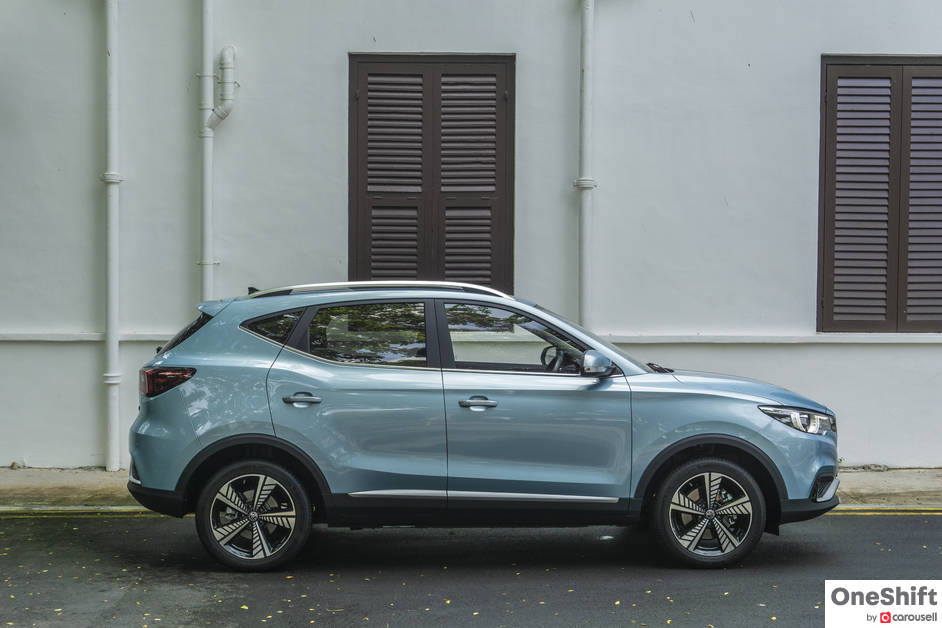
More importantly, this compact EV is priced attractively; especially great for those who are out for a bang-for-buck buy.
While EVs gaining popularity is a recent thing, building a performance car with an electric drivetrain can be a challenging one. And with many developed nations around the world signalling their intent to make that switch somewhere in the future, Porsche has stepped up to their plate with a car that can easily showcase what the brand is capable of producing.
Porsche has bucked the trend of fielding an SUV, and has instead introduced their very first electric vehicle as a sedan. The Taycan carries Porsche’s design DNA well, with bulging front and rear wheel arches, and a sloping roofline, that all points to their 911 halo car.
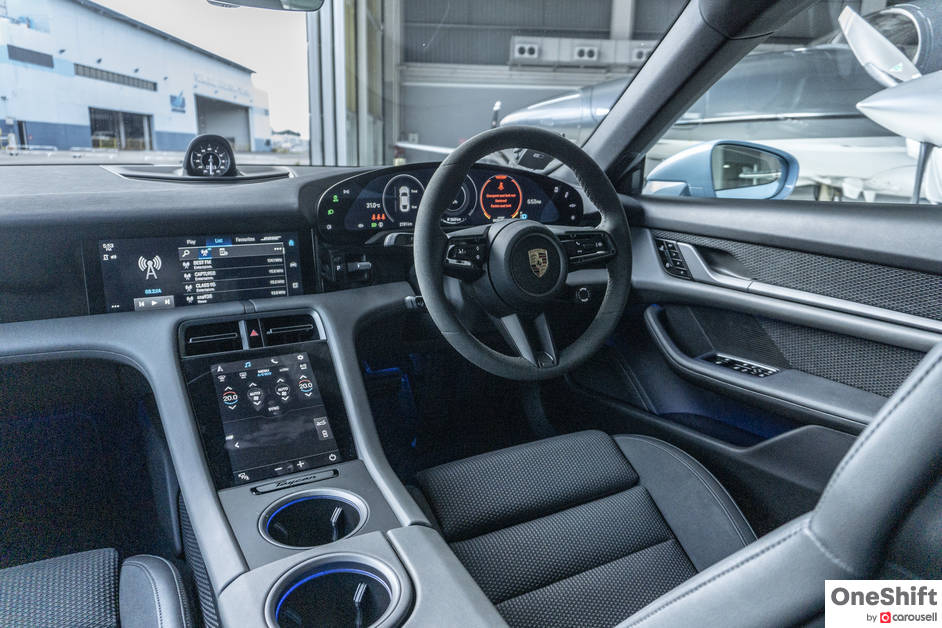
Buyers are treated to a high-tech interior, with a hint of Porsche tradition. Design elements like its multi-dialed display, while being a digital setup, carries the same layout as the rest of the cars in its range.
But where the focus lies here, is in the Taycan’s drivetrain. The Taycan 4S comes as standard with 530ps, and buyers can opt for the Performance Battery Plus package which boosts the output to 571ps. The battery upgrade also increases the range from 365km to 414km.
Its acceleration is made to be progressive to feel more like an internal combustion engine.
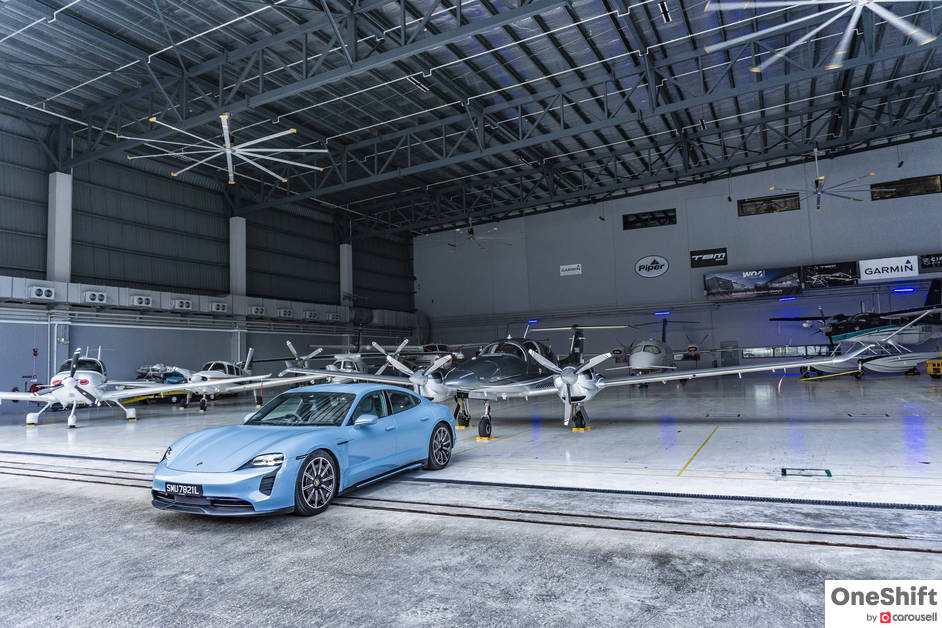
The Taycan also boasts a 2-speed gearbox, for optimisation of its drive delivery, with its rear-biased drive, allowing for a more natural driving experience. All of its torque can also be shifted to either the front or rear, where the driving situation calls.
With the optional Rear-Axle Steering, maneuverability and stability is further enhanced, while features like its Dynamic Chassis Control (DCC) Sport, ensures that the Taycan can easily switch from a daily driver, to a true-blue sports car.
With a system voltage of 800V (versus 400V in conventional EVs), the Taycan can charge from 5% to 80% SoC (state of charge) in as fast as 22.5 minutes (that is, once the infrastructure is available).
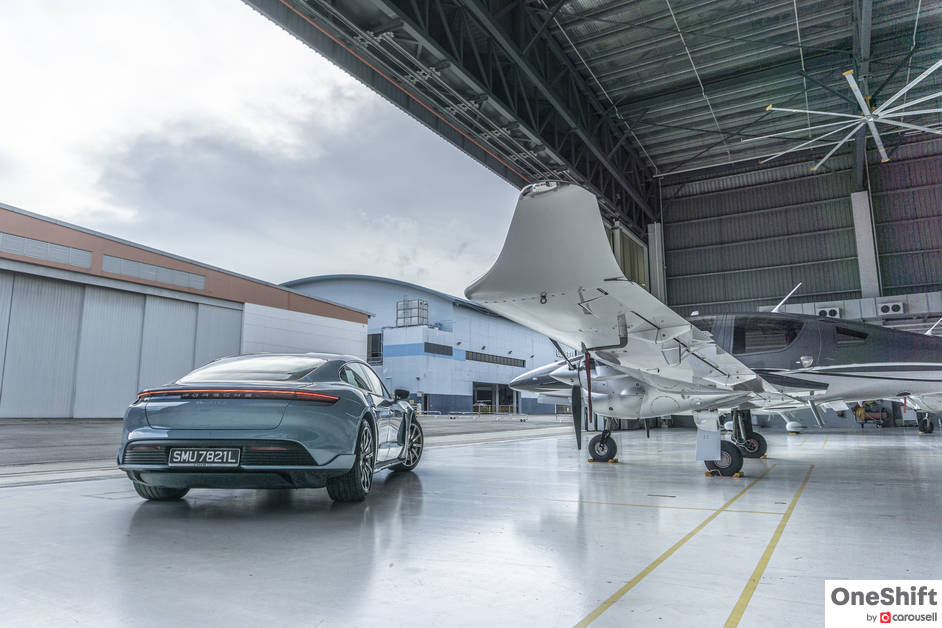
With all the tech included within the Taycan, it is clearly the best sorted EV in the industry to date.
It does look like specialist car manufacturer, McLaren is expanding its range to cater for a wider audience. The McLaren GT benefits from the brand’s supercar building background, and features a superlight but rigid bespoke MonoCell II-T monocoque carbon fibre cell made specially for it.
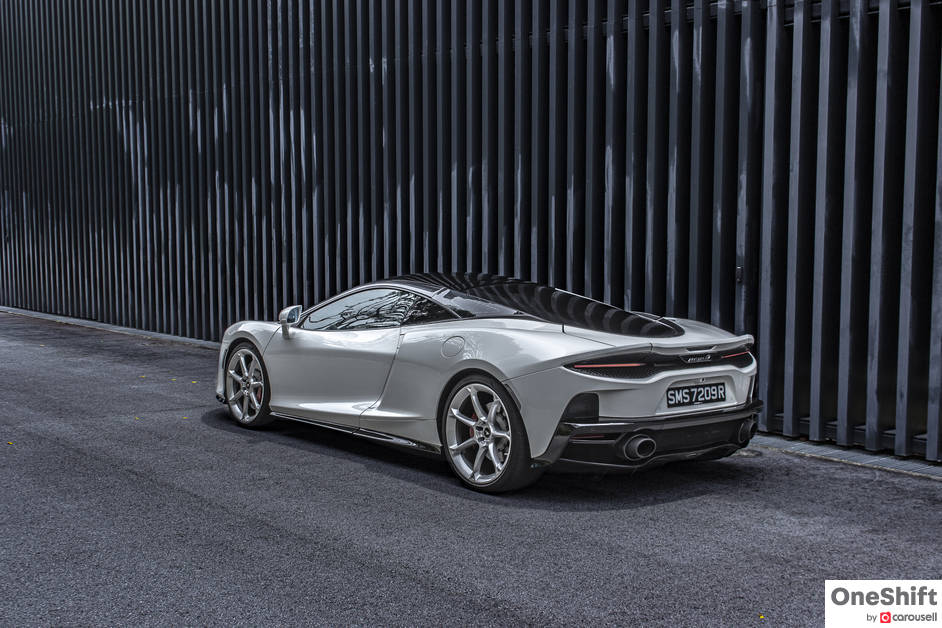
While most GT cars have their engines mounted in-front, the McLaren, like its stablemates, boasts a mid-mounted setup, with its 4-litre twin-turbocharged V8, capable of 620ps and 630Nm. Interestingly, McLaren has factored in the need for carrying luggage, with a 420 litre luggage area below the full-length glazed automatic tailgate.
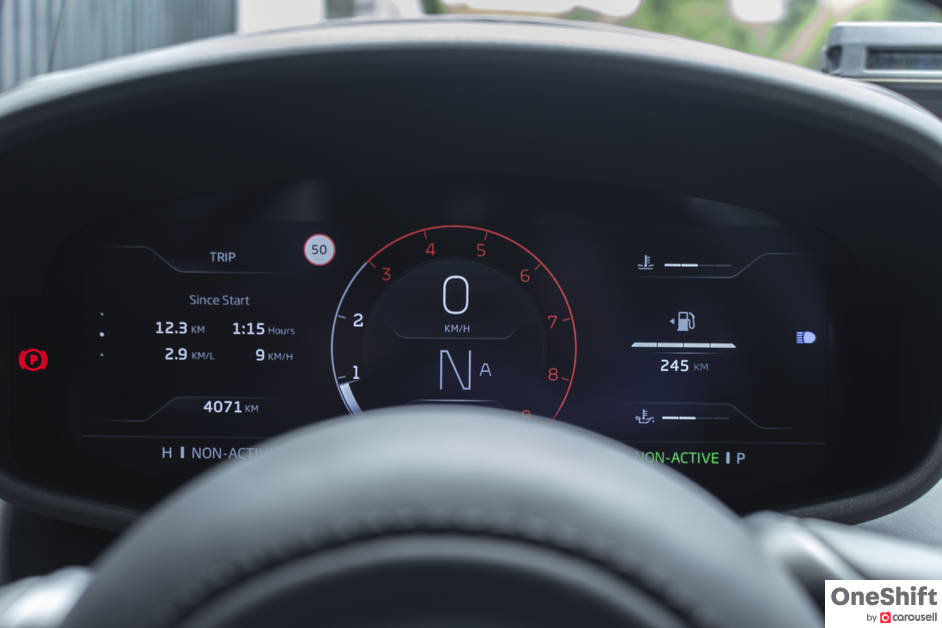
McLaren has also included dihedral doors, making this car a great conversation piece. The GT may be McLaren’s Grand Tourer, but it does have plenty of supercar pedigree.

It is no secret that Toyota developed their new Supra with the help of the Germans. But keeping development costs down, when producing small volume cars that excite, is clearly becoming the way to go for some manufacturers these days.
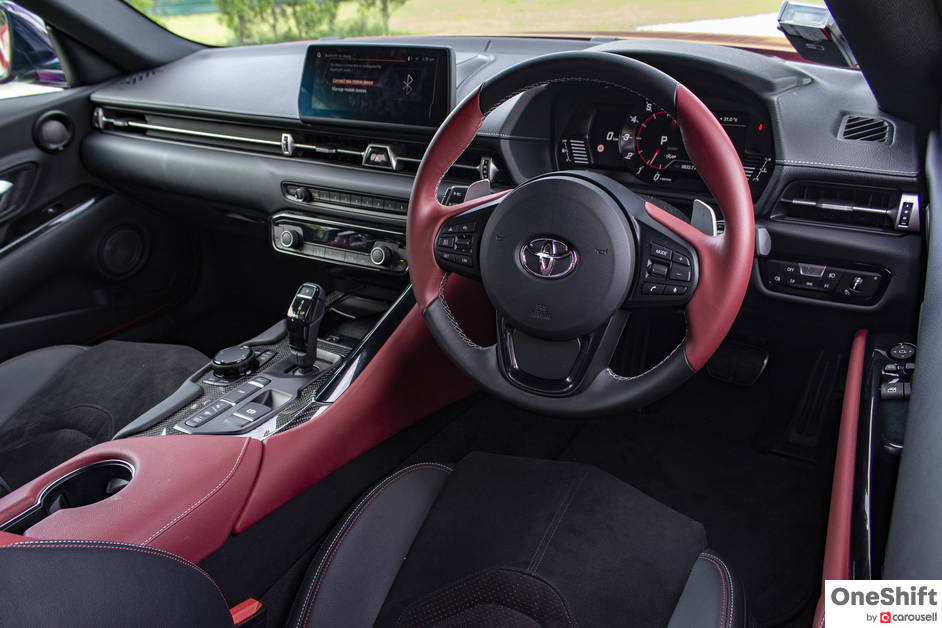
The Toyota Supra GR 3.0 has quite the same DNA as Toyota’s previous iteration. Where a straight-six, mounted in North-South format, delivering 335bhp and 500Nm drives the rear wheels, this time, via an 8-speed automatic transmission.
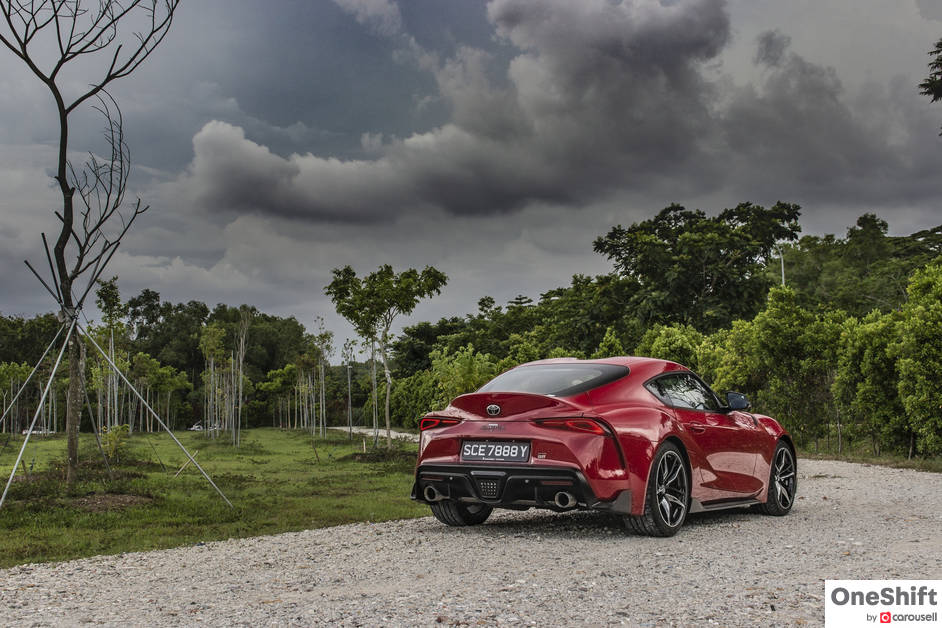
The Supra’s well-balanced nature, in the right hands makes this sports car quite a formidable track weapon. Yet, it is still pliant enough to function as an entertaining daily driver.
Credits:


Get the Best Price for your used car
from 500+ dealers in 24 hours

- Convenient and Hassle-Free
- Consumer Protection
Transparent Process
With No Obligation








